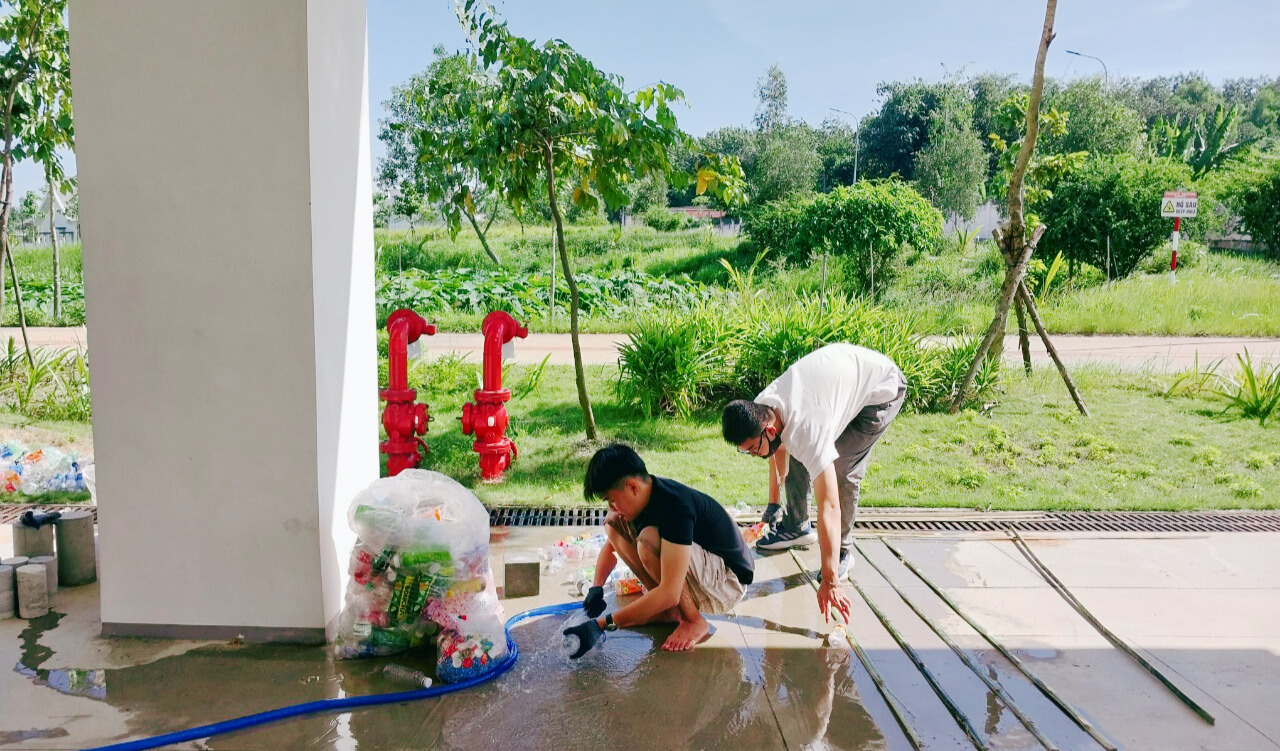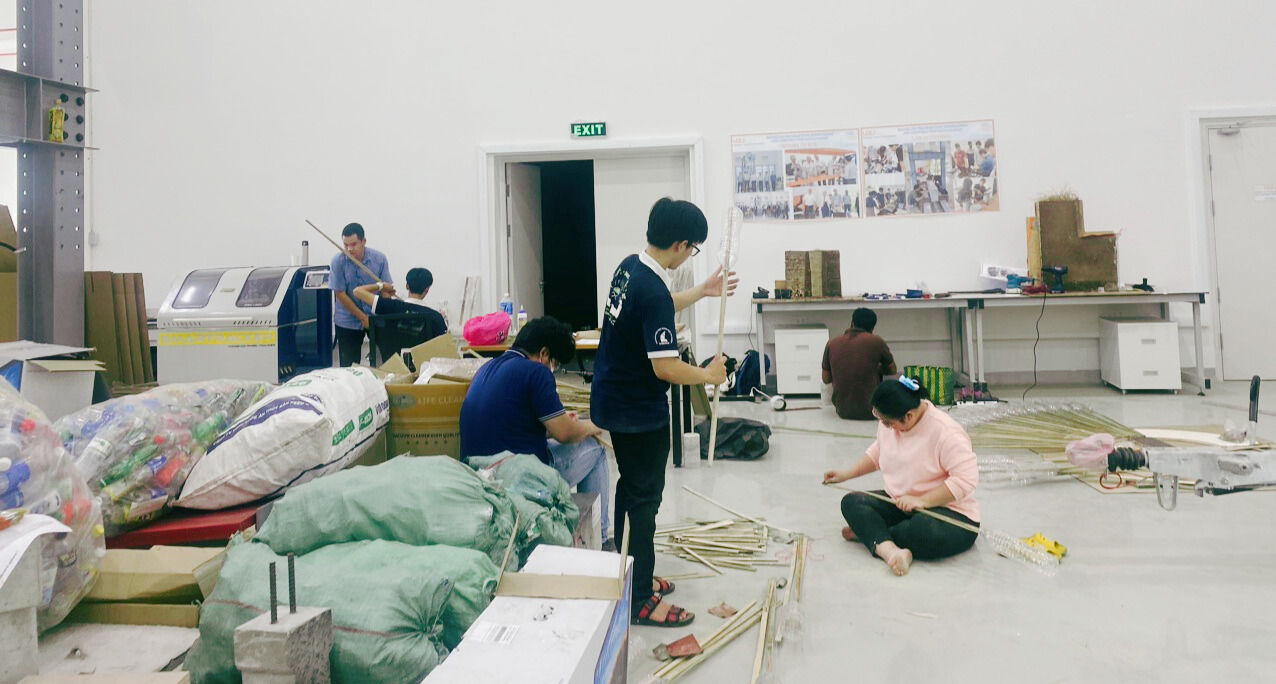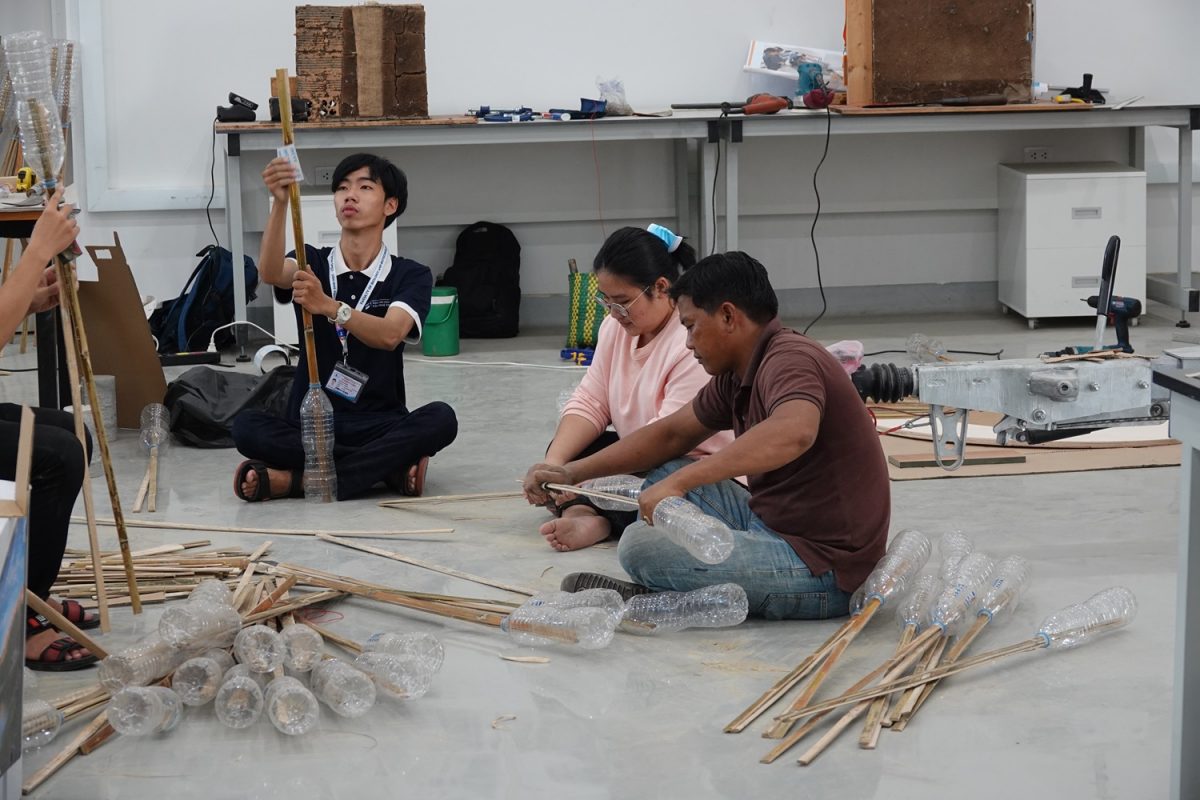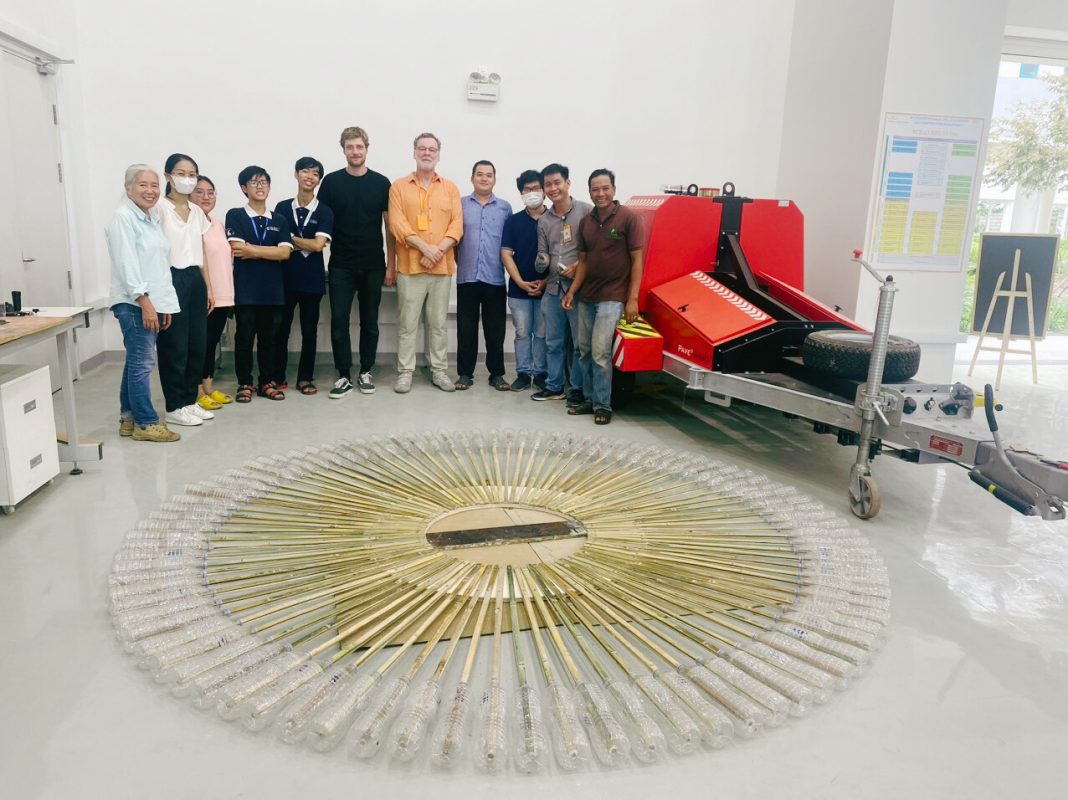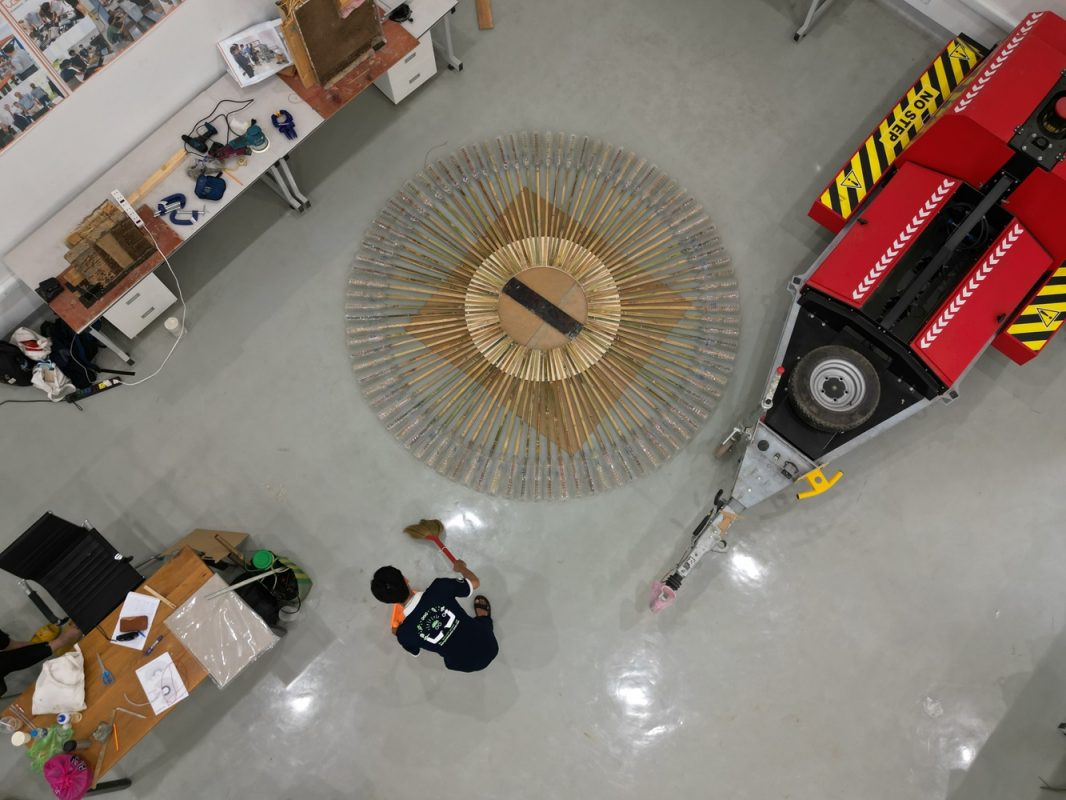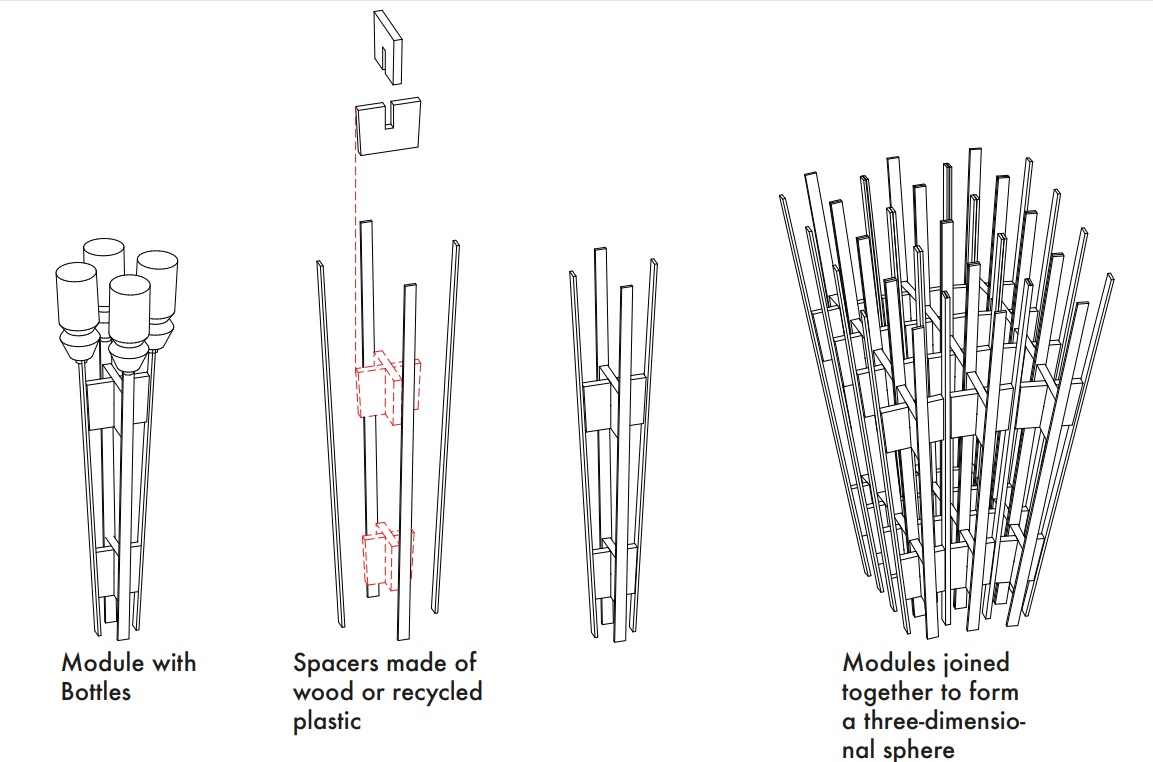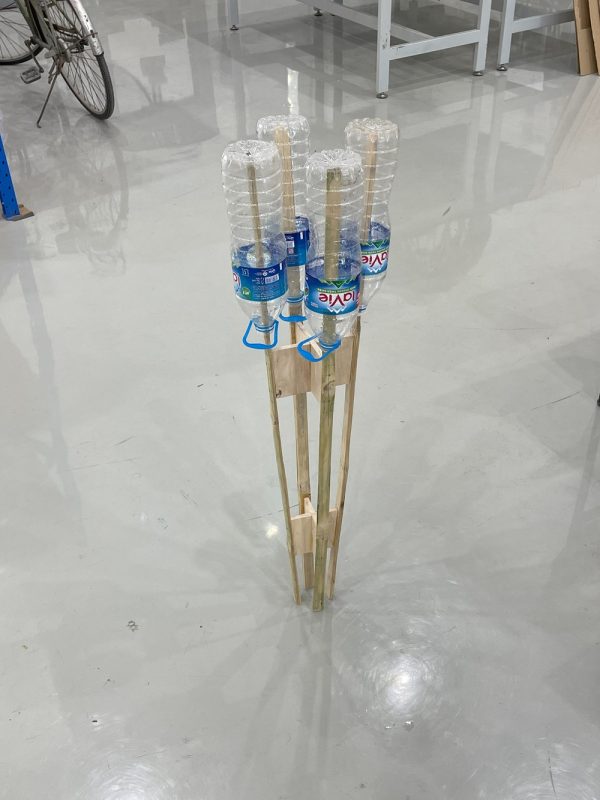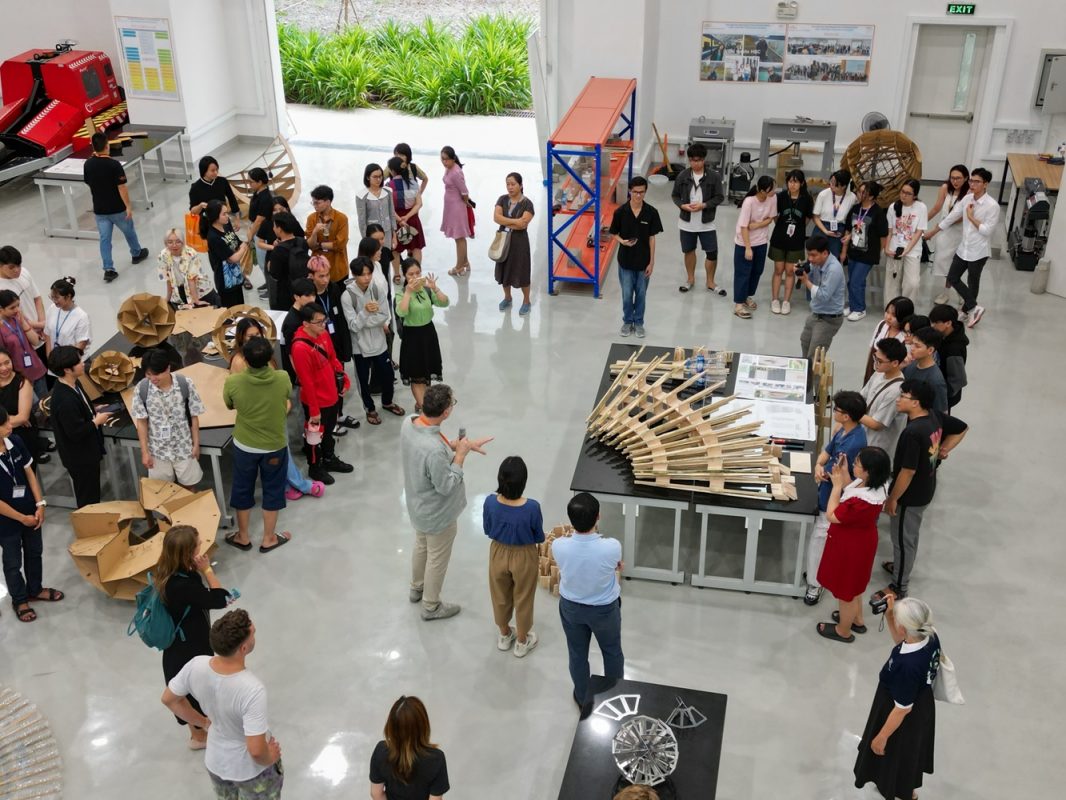
1. Introduction
Addressing global warming is a major challenge. Sustainability, environmental awareness, recycling, and resource conservation will underpin future professions, sciences, and industries. Universities, including Vietnamese-German University, can play a vital role. The workshop on recycling and water aims to contribute by using design and research to make these topics visually and conceptually tangible.
It starts by raising awareness about resource usage through reuse and processing. Design, creativity, and brainstorming are crucial tools. The workshop builds bridges between cultures and defines common goals. Using bamboo as a sustainable “high-performance building material” refers to Vietnamese traditions. Connection technologies in architecture, mechatronics, engineering, and structural design are examined and developed.
The workshop also explores design, material science, combinations, and sustainable implementation. The recycling and waste issue is linked to water as a resource. Microplastics are found worldwide and have entered our food chains. The workshop visualizes water contamination, a pressing problem. Scientific and creative work on the Saigon River includes all relevant parameters. Architectural and design models provide an opportunity for creative discussion and visualization through exhibitions at the university, facilitating broad knowledge transfer.
2. Opening ceremony
In the morning of November 27th, 2023, the opening ceremony of the interdisciplinary workshop “Out of Waste – Recycling Maker” took place at the Reading Theatre of the Library at Vietnamese-German University (VGU), Binh Duong Campus. VGU had the honor of welcoming representatives from the Department of Natural Resources and Environment of Binh Duong Province, the Department of Science and Technology of Binh Duong Province, the World Trade Center (WTC) Binh Duong, as well as faculty, staff, and students from universities including Vietnamese-German University, Thu Dau Mot University, Van Lang University, International University -Vietnam National University, Ho Chi Minh City University of Industry and Trade.
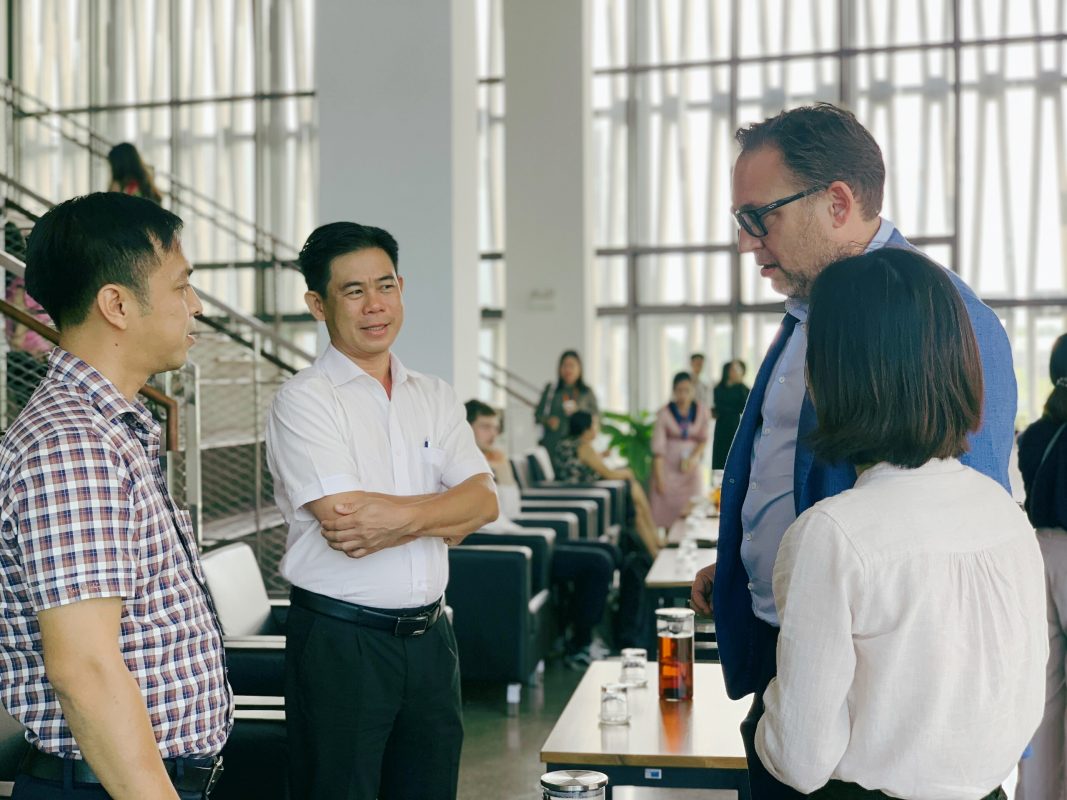
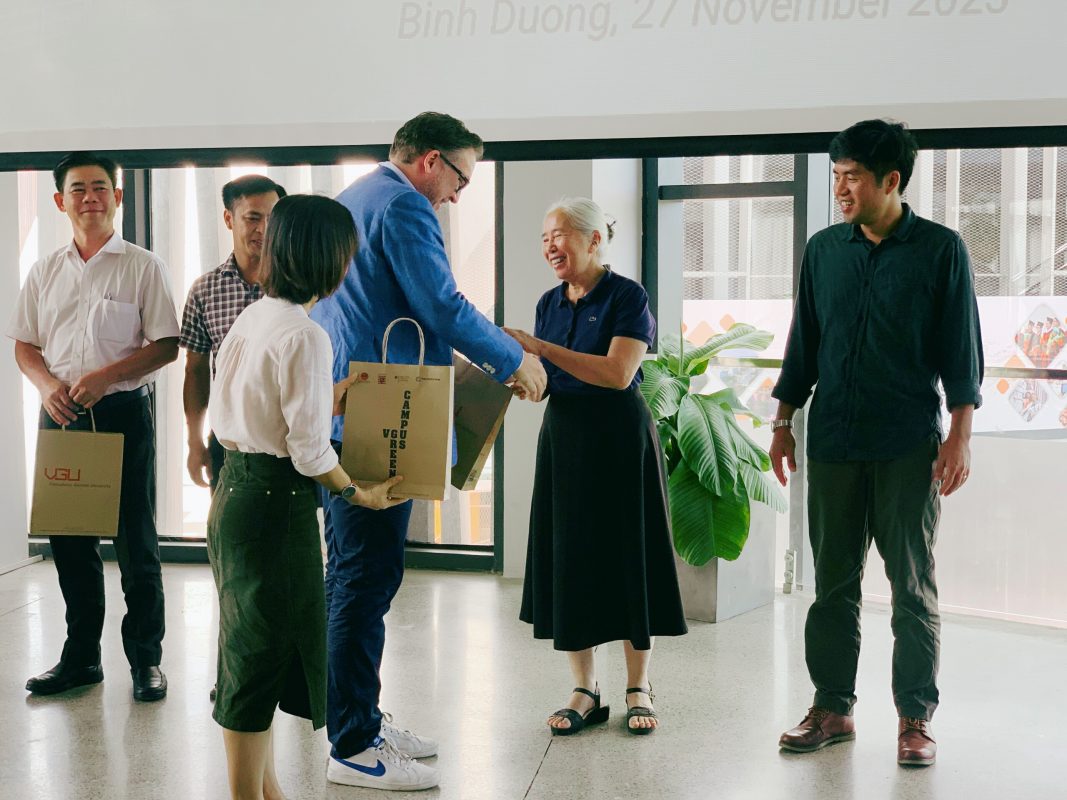
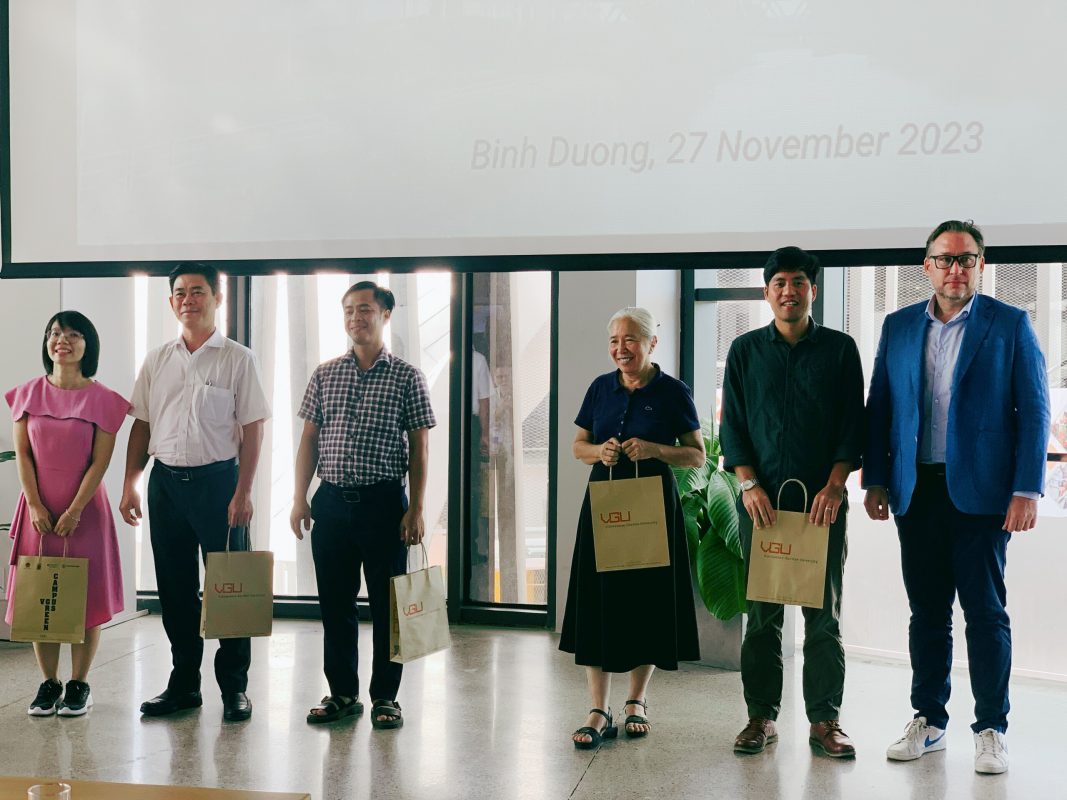
During the opening ceremony, Dr. Thomas Aulig, Vice President of VGU, shared insights into the significance of the workshop and outlined the development direction of the project towards sustainability. Ms. Huynh Dinh Thai Linh, Director of the World Trade Center Binh Duong and former coordinator of VGU’s MBA program, also had the opportunity to discuss waste management solutions, recycling technologies for environmental protection, and related competitions aimed at raising awareness and encouraging actions to minimize the impact of waste on the environment.
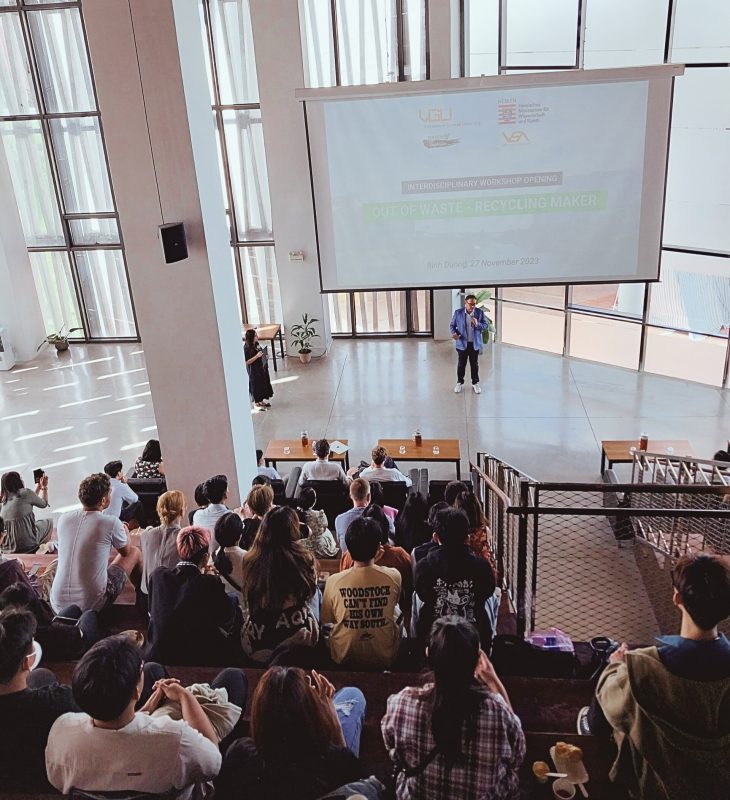
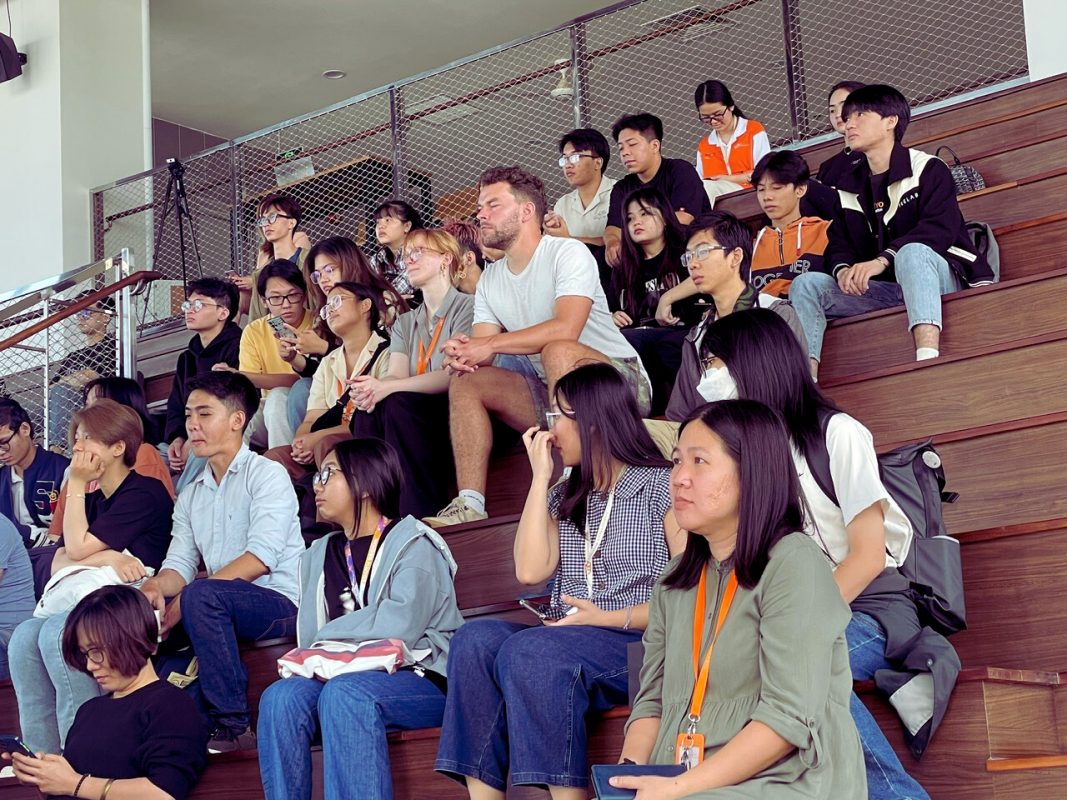

Markus Heinsdorff – workshop trainer, along with his assistant Lukas Struthmann, shared insights into his past projects and inspired students who are about to participate in the workshop. They discussed the vision, significance, and the journey the students will embark on during this project.
Markus Heinsdorff has led and designed projects, installations, and exhibitions globally, spanning countries like China, India, Vietnam, the USA, and Europe. His works often incorporate locally sourced materials. He has received numerous awards and accolades, including the Bundesverdienstkreuz am Bande in 2015. Notable projects include pavilions for Germany’s presentations in India and China, as well as a role as a visiting professor in various Chinese universities. In 2017, he co-founded an experimental space laboratory at the Technical University, Munich.
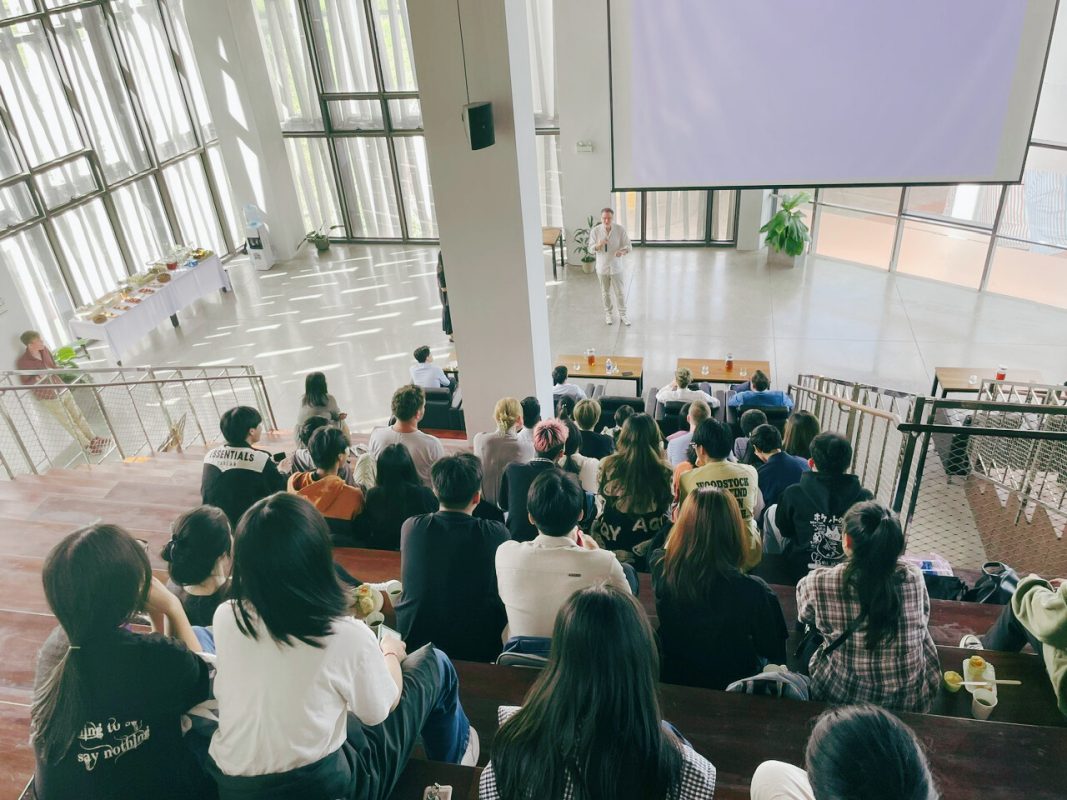

On this occasion, esteemed guests and students from universities within and beyond Binh Duong Province had the opportunity to visit practical workshops and laboratories at VGU, including Global Production Engineering and Management, Architecture, Civil Engineering, Mechanical Engineering to experience the vibrant atmosphere of ongoing innovation. The event venue of the workshop is the Civil engineering laboratory, one of the VGU’s modern spacious places with appropriate tools and types of equipment, offering excellent facilities for these student groups.
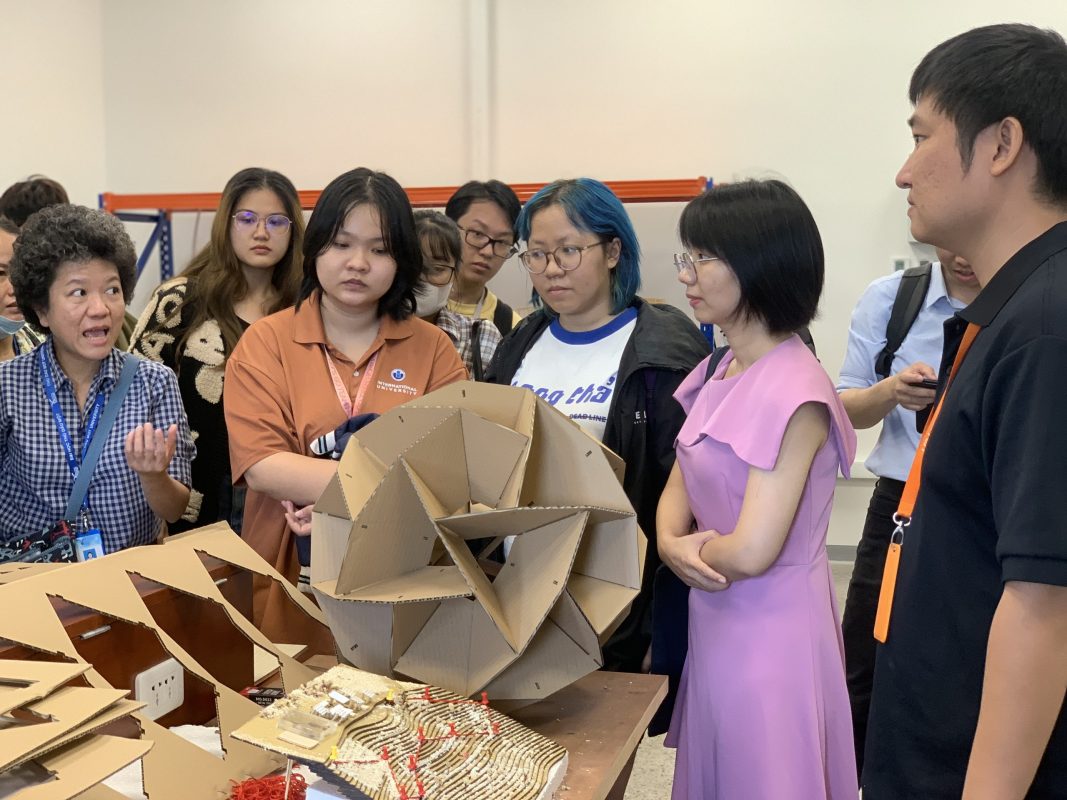
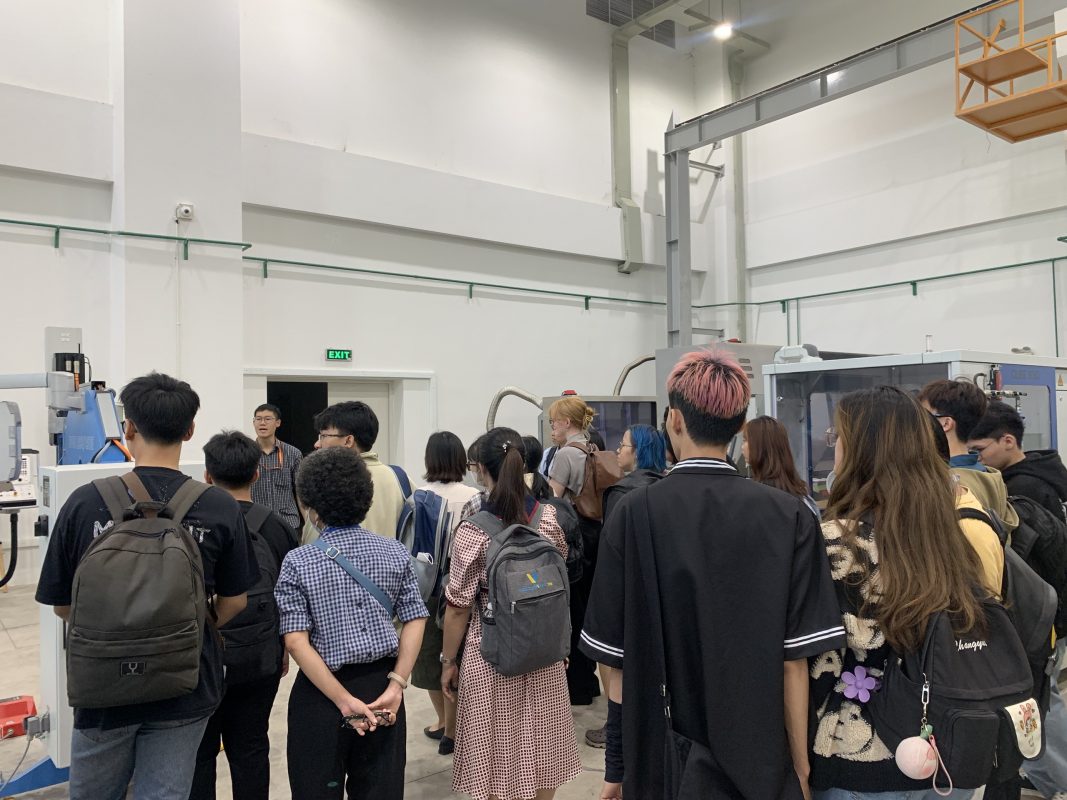
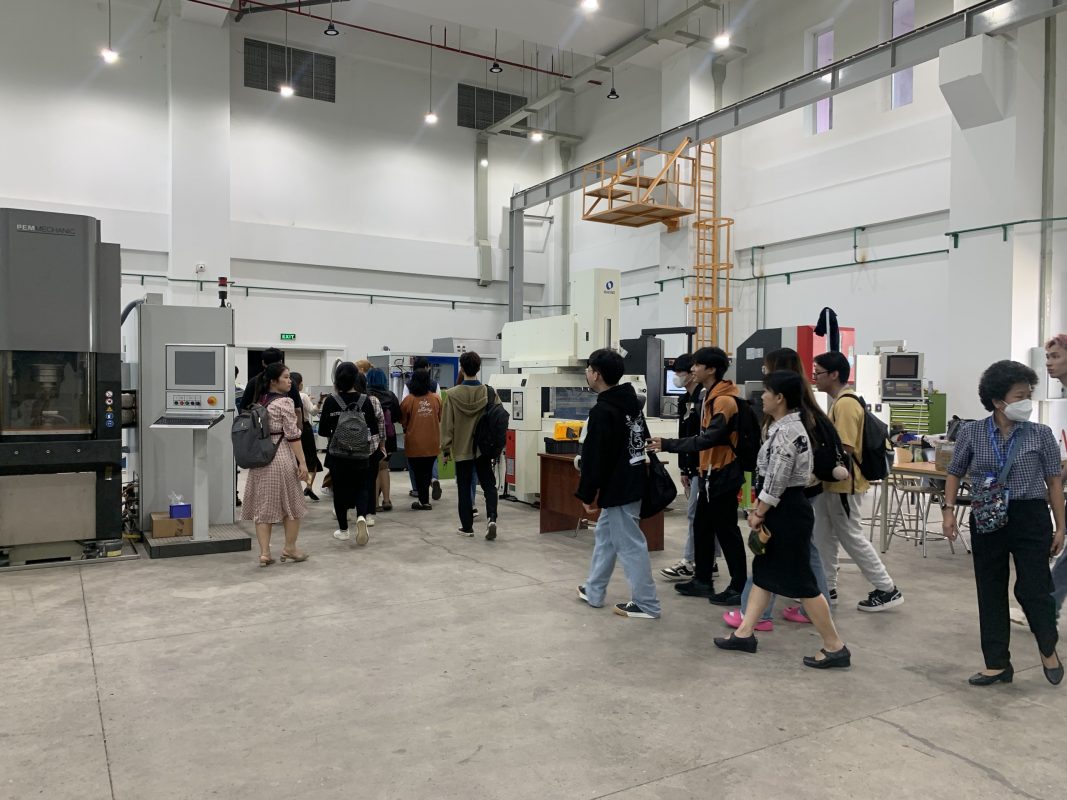
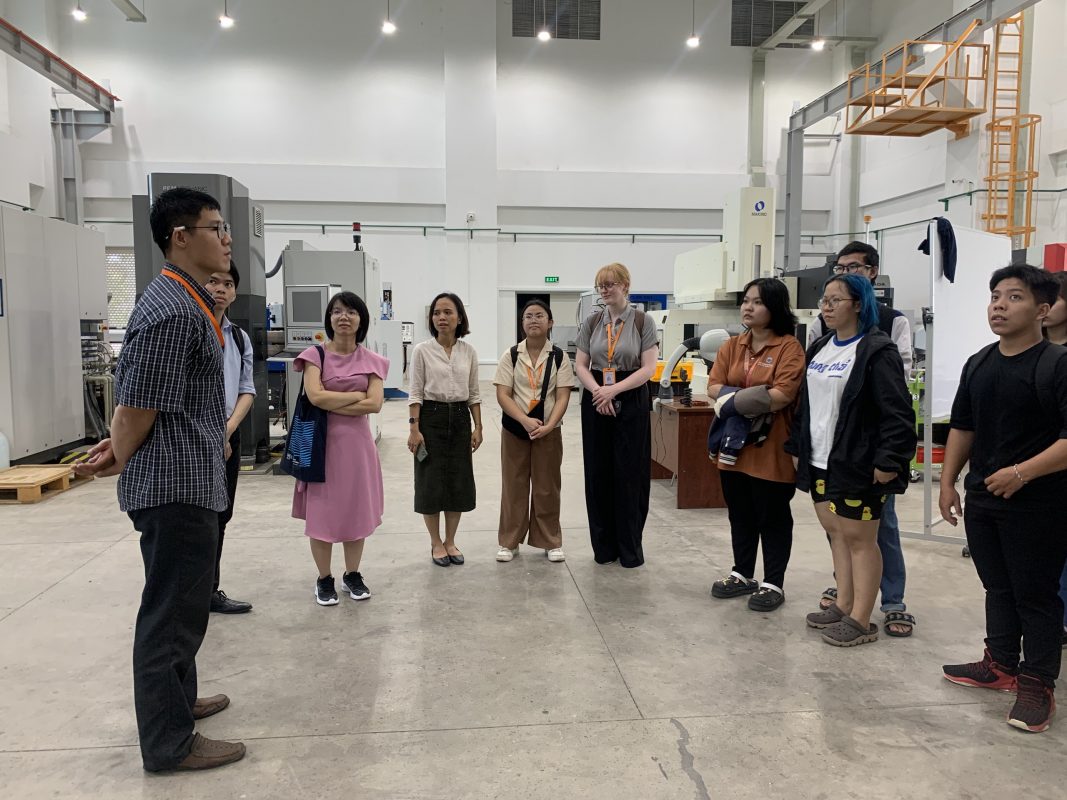
3. Workshop execution and outcome – Part 1
The workshop is scheduled to run from November 27th to December 1st, 2023, with the support of two crucial material sponsors: Phu An Bamboo Village and a recycled plastic bottle manufacturing plant. With the participation of 73 students from the fields of Architecture, Civil Engineering, Mechanical Engineering, Electrical Engineering and Information Technology, Environment, etc., representing six universities, the students were organized into eight groups, each assigned a different project based on the abilities and interests of the respective teams. Let’s take a look back at the students’ engagement and the outcomes achieved during the workshop.
Topic I – Recycling Plastic
P1 – Bottle circle
Concept: Test object with recycled bottles for possible large sphere installation as art, design, and light object.
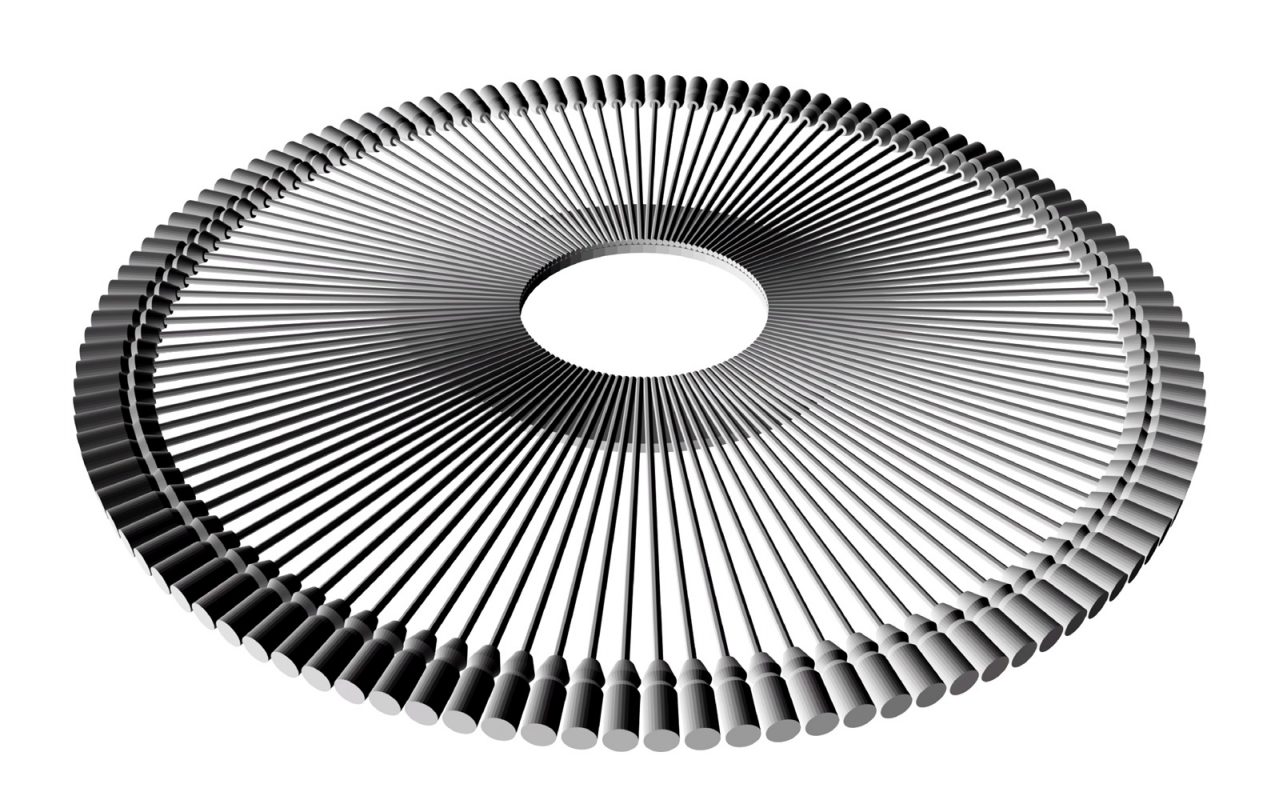

Task: Perfect arrangement, static properties, experiment with bottles and rods, preliminary study for large bottle sphere (up to 300 cm).
Material: Recycled bottles, bamboo new, plywood ring/rest new or recycled (to fix the bamboo sticks), fastening screws or glue, or nails LED low voltage lamps, transformer
P2 – Bottle sphere
Concept: Test object with recycled bottles for possible large sphere installation (up to 3 m) as art, design, light object. Interior lighting with LED.
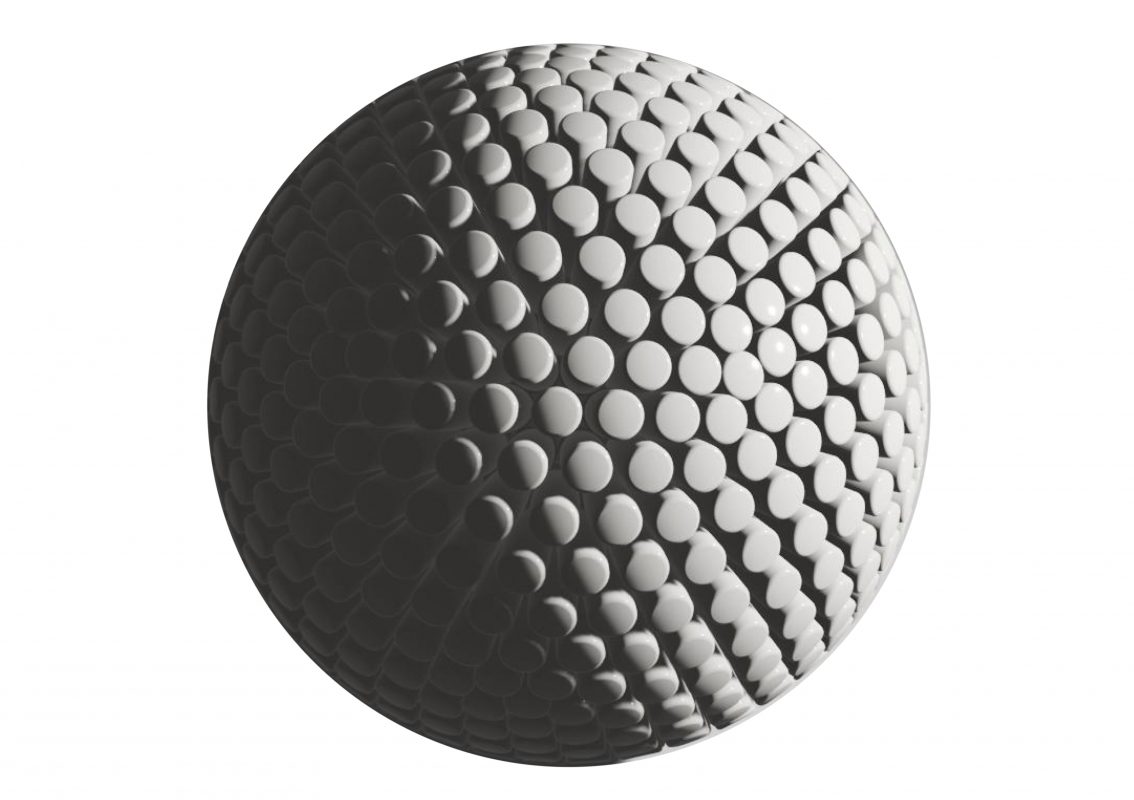
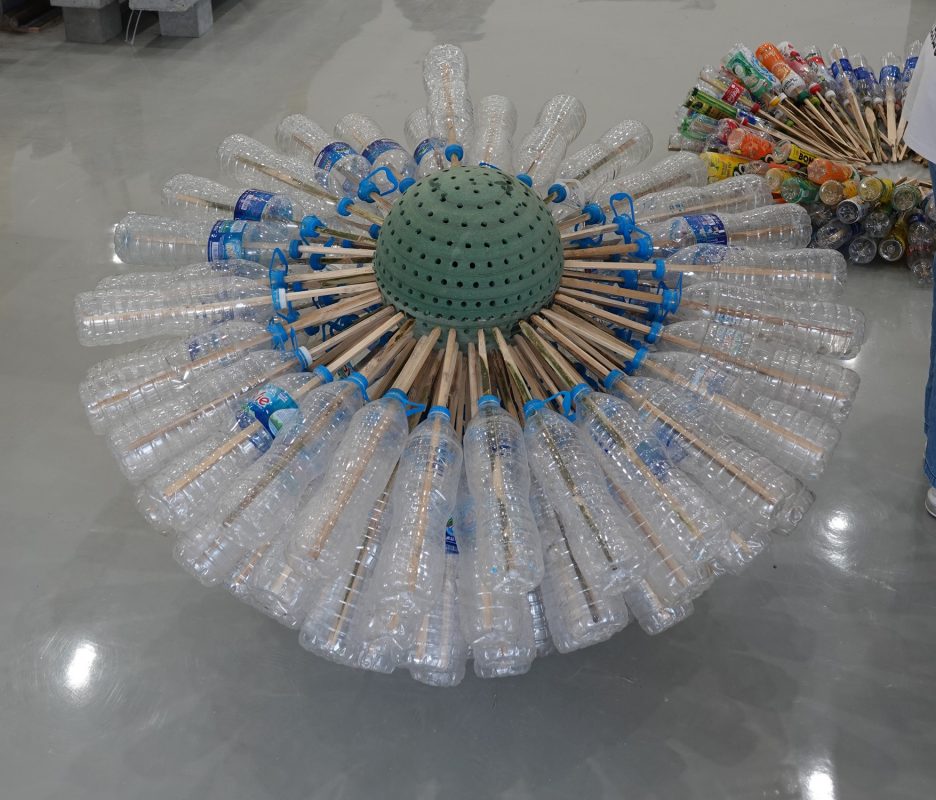
Task: Make plans for the object, develop the inner sphere/sphere to hold the bottle holders (bamboo sticks). Inner sphere as 3D print with recycled filament or plastic mold or wooden sphere (recycled building material)
Material: Inner ball/sphere made of wood or 3D print PET recycled filament (printer material in thread) form, Bamboo sticks 15 mm x 5 mm, PET bottles, LED low voltage lamps, transformer
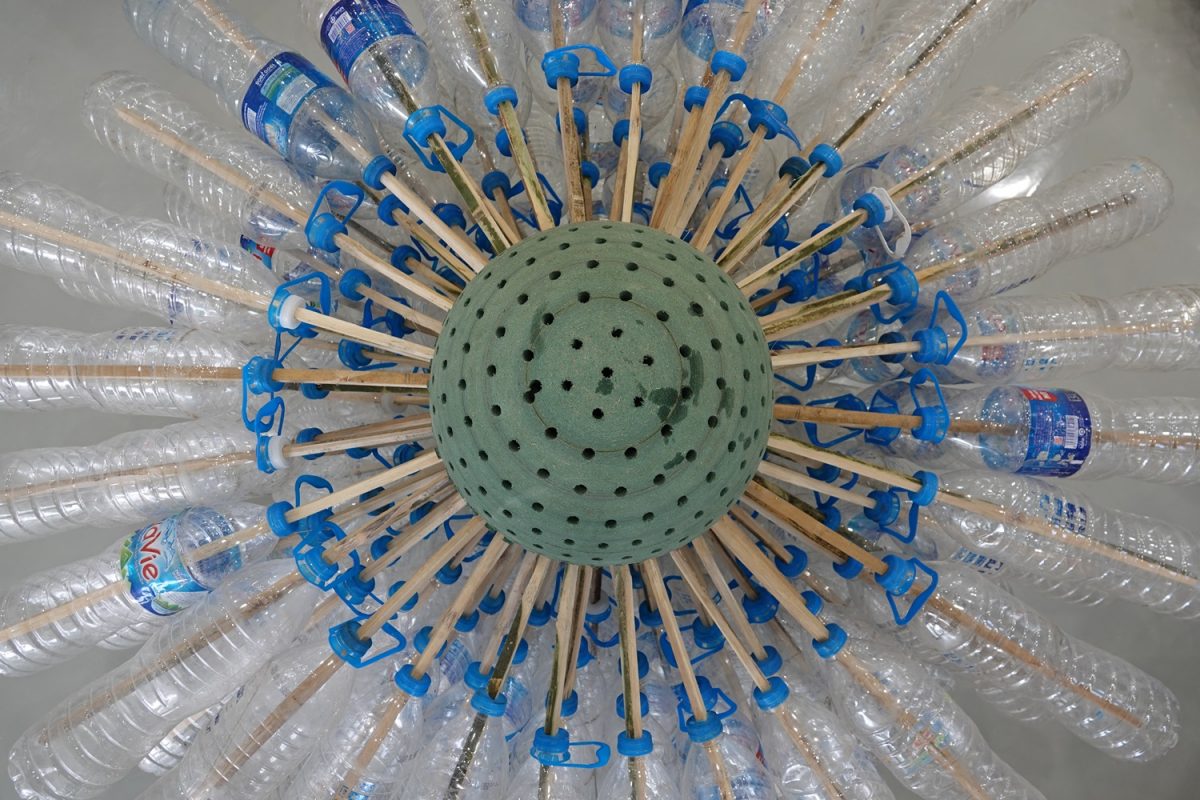
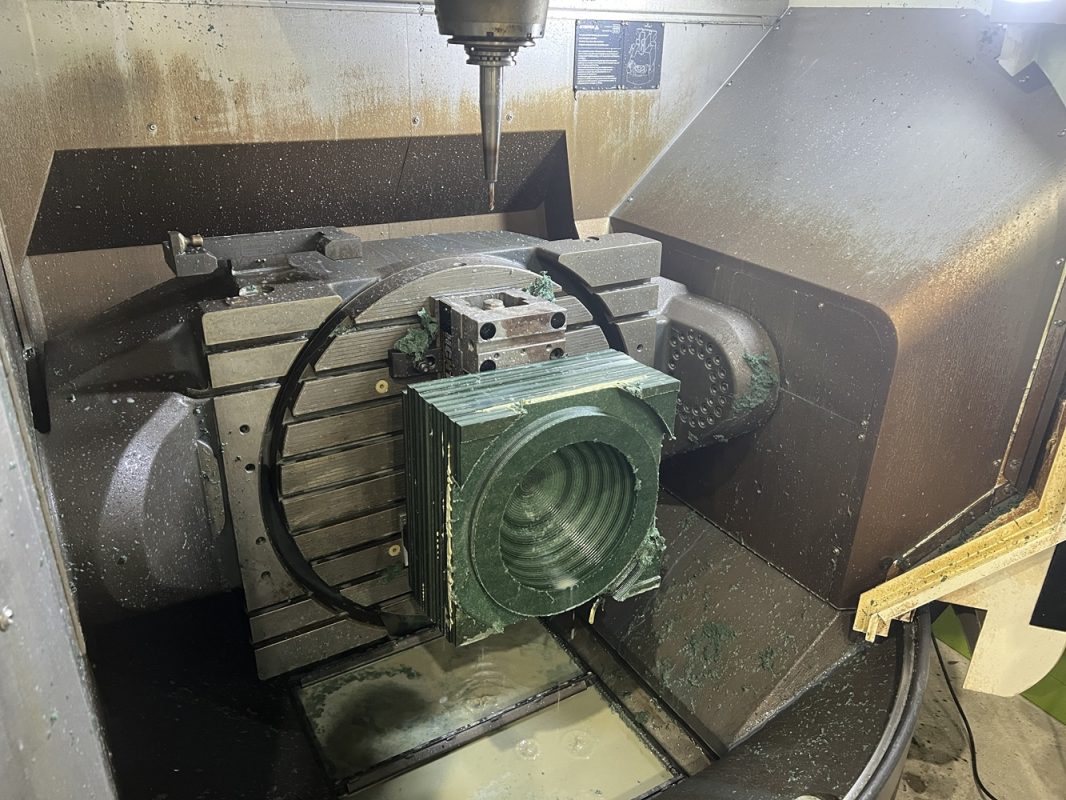
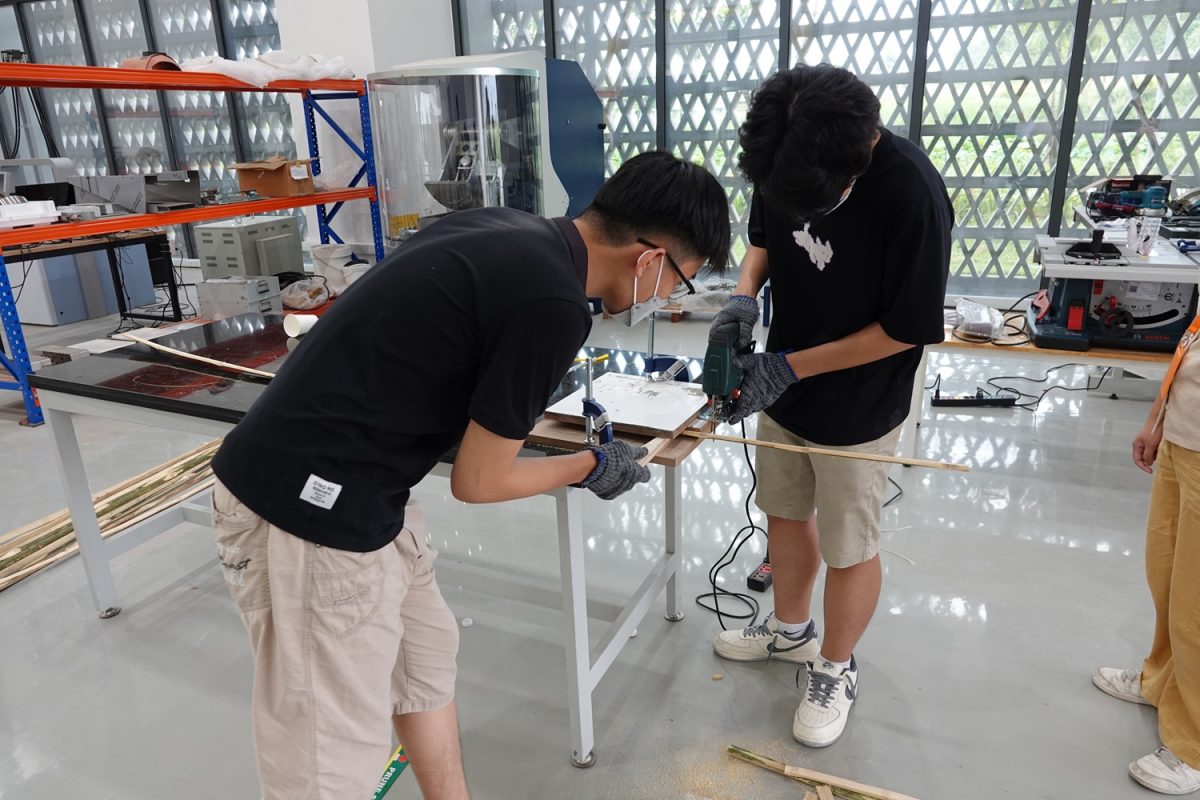
P3 – Bottle sphere – structural
Concept: Extremely lightweight construction from rods for a spherical structure Fabricate single elements to represent the structure. The conical single elements for a large bottle sphere should be able to be assembled like models.
Task: 3D model, detailed model plan with construction, production of 1:1 single element models 5 to 10 pieces.
Material: Bamboo sticks 20 x 5 mm PET bottles (20 bottles)
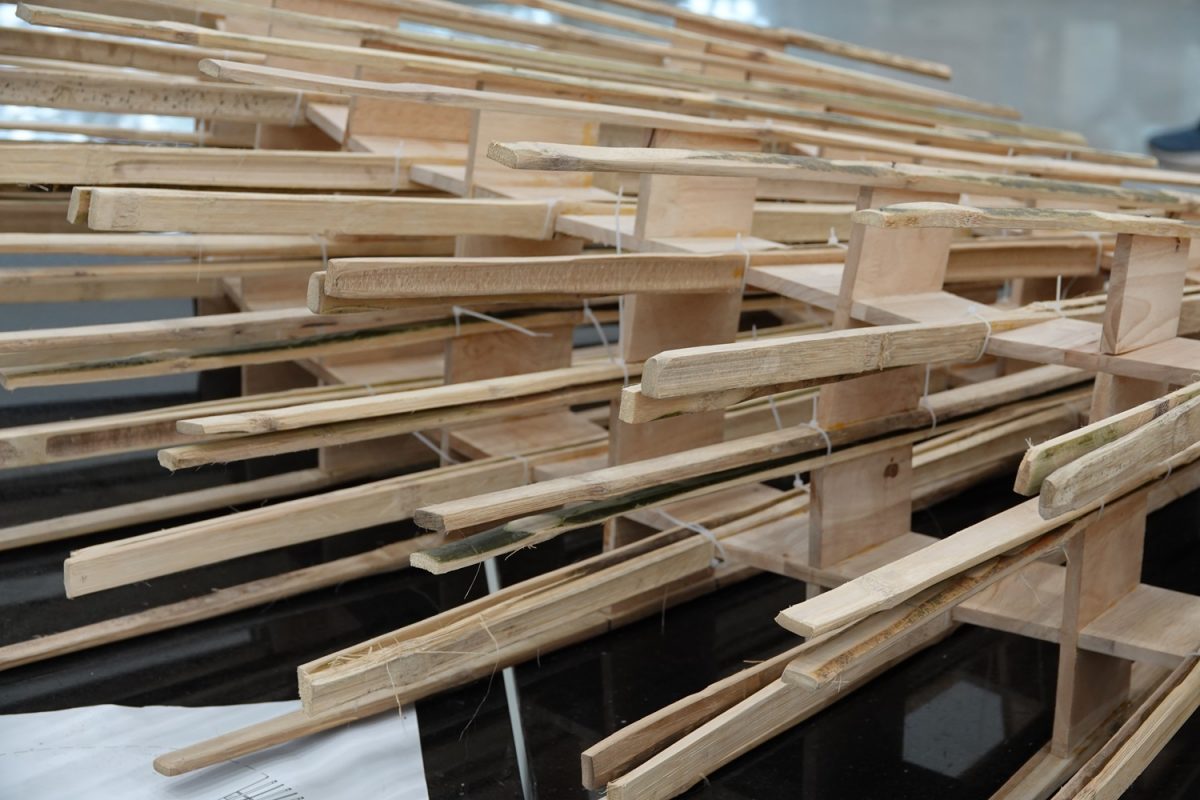
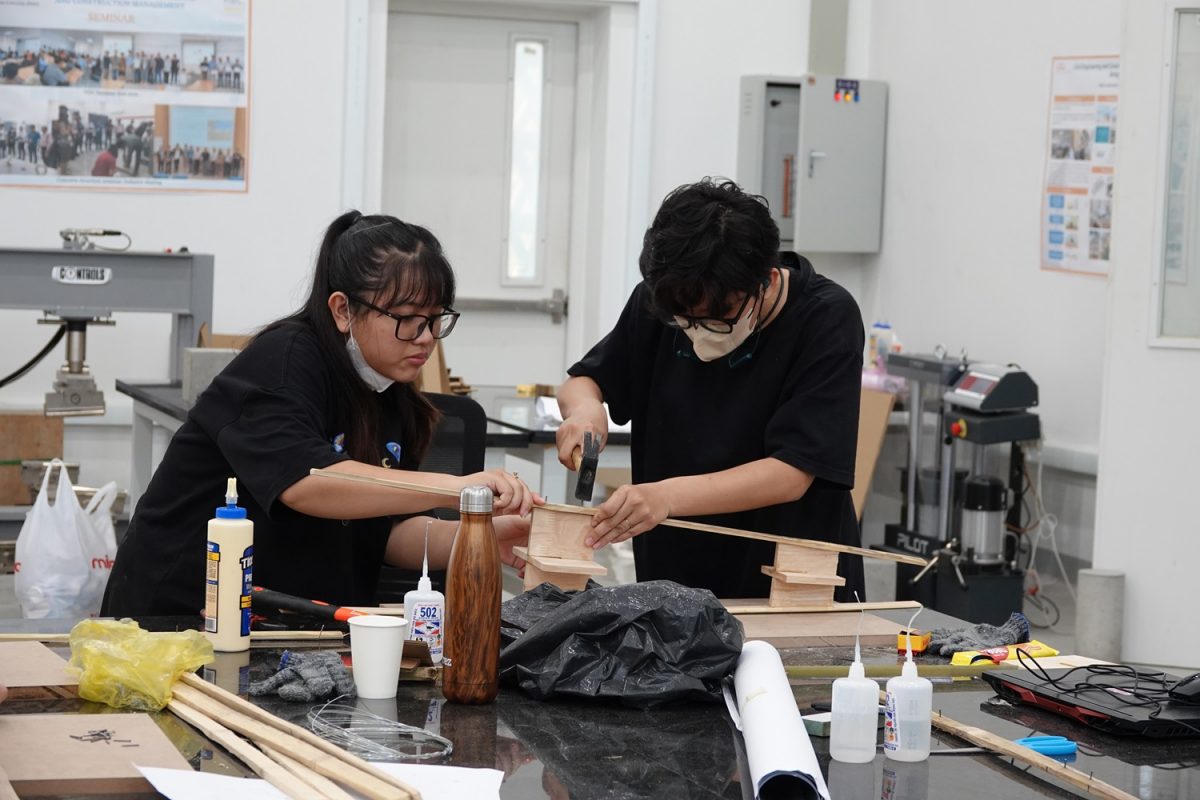
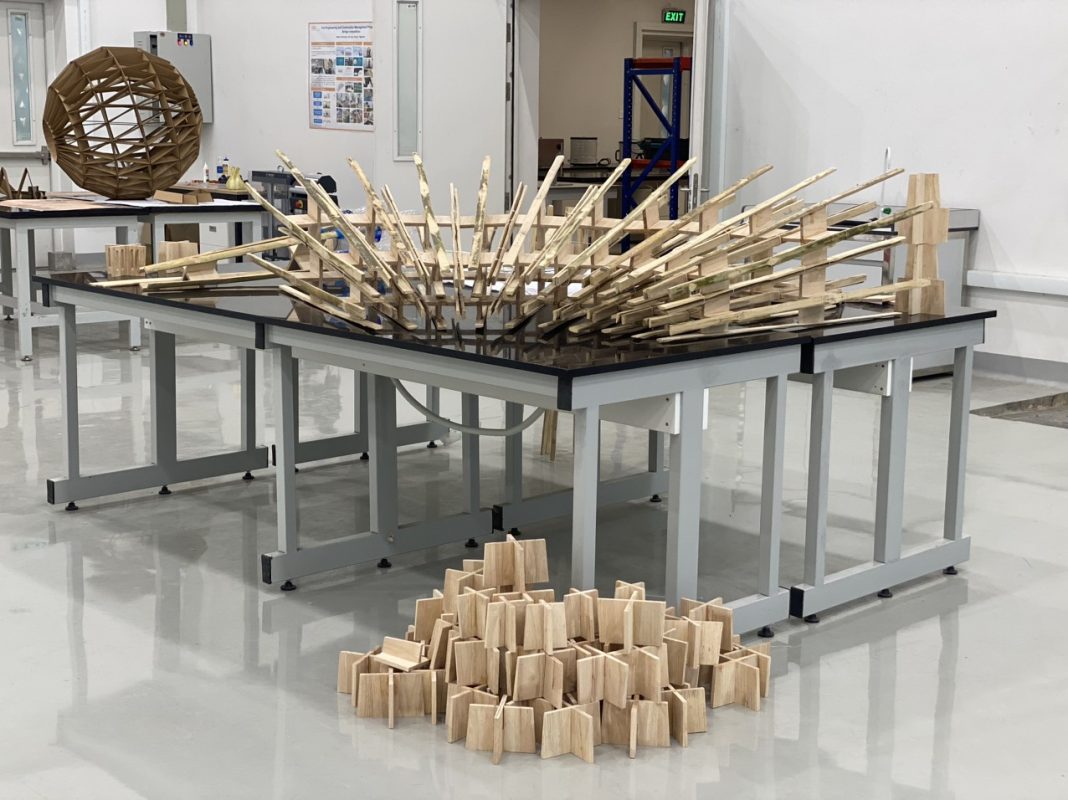
P4 – Bottle wall
Concept: Lightweight construction made of rods for a light wall as an art and architecture recycling object. Consisting of self-made bamboo lattice construction with PET bottles
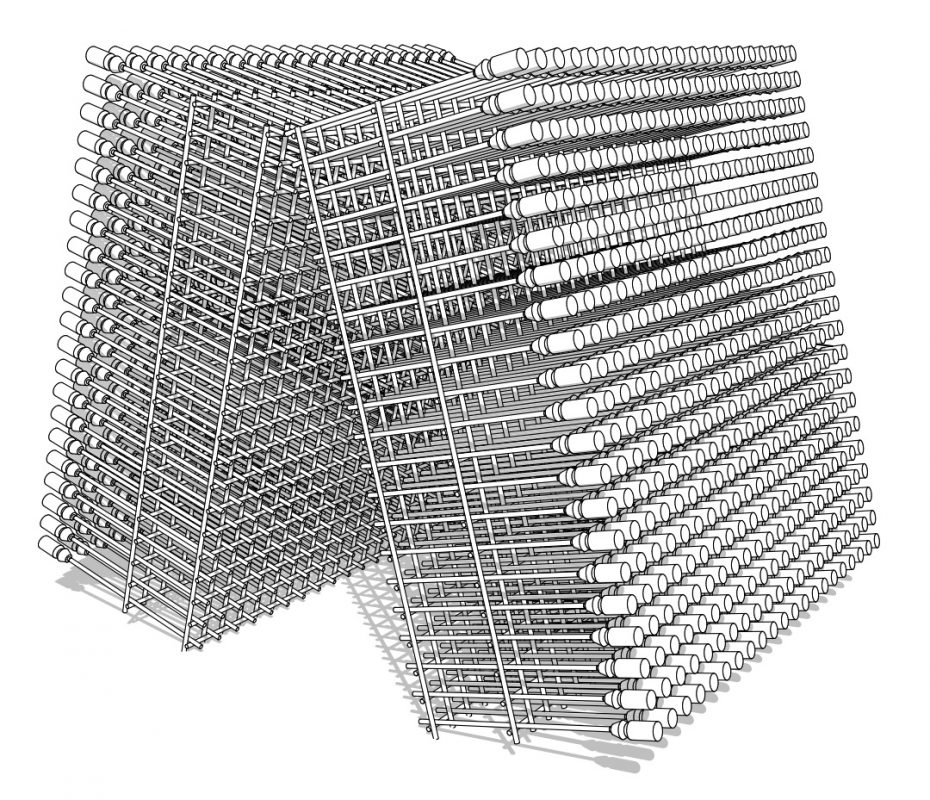
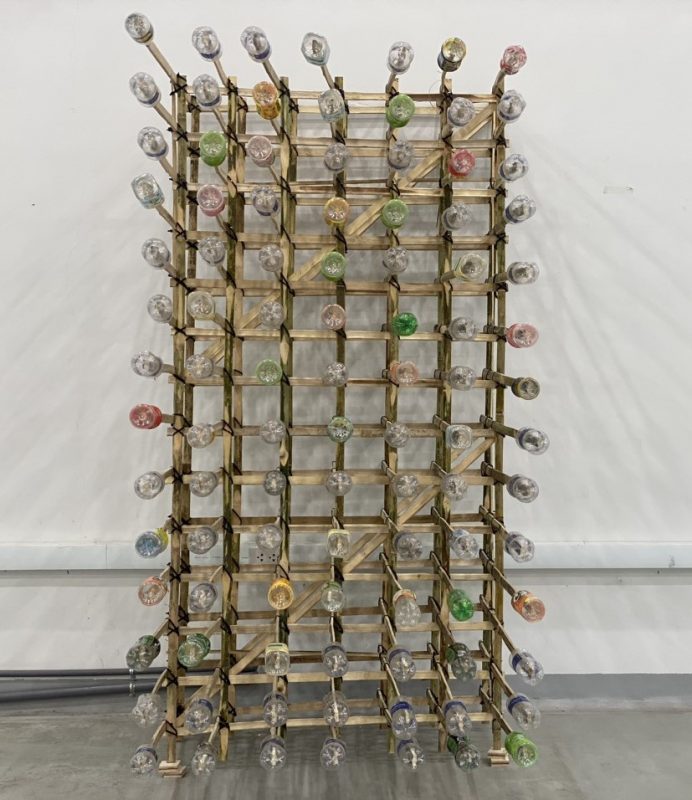
Task: Make 2 or 3 D plans for the object, develop the wall construction/structure with bracing only from rods to hold bottles, design 1 to 2 walls.
Material: Bamboo rods width 20 and 25 mm in different lengths, 400 bars per wall = 230 cm length, 2 walls 800 bars plus stiffeners, Bottle bars 1100 mm length x 20 mm width x 5 mm thickness Plus reserve PET bottles, per wall 400 bottles 0,75 or 1 liter = 800 bottles plus reserve.
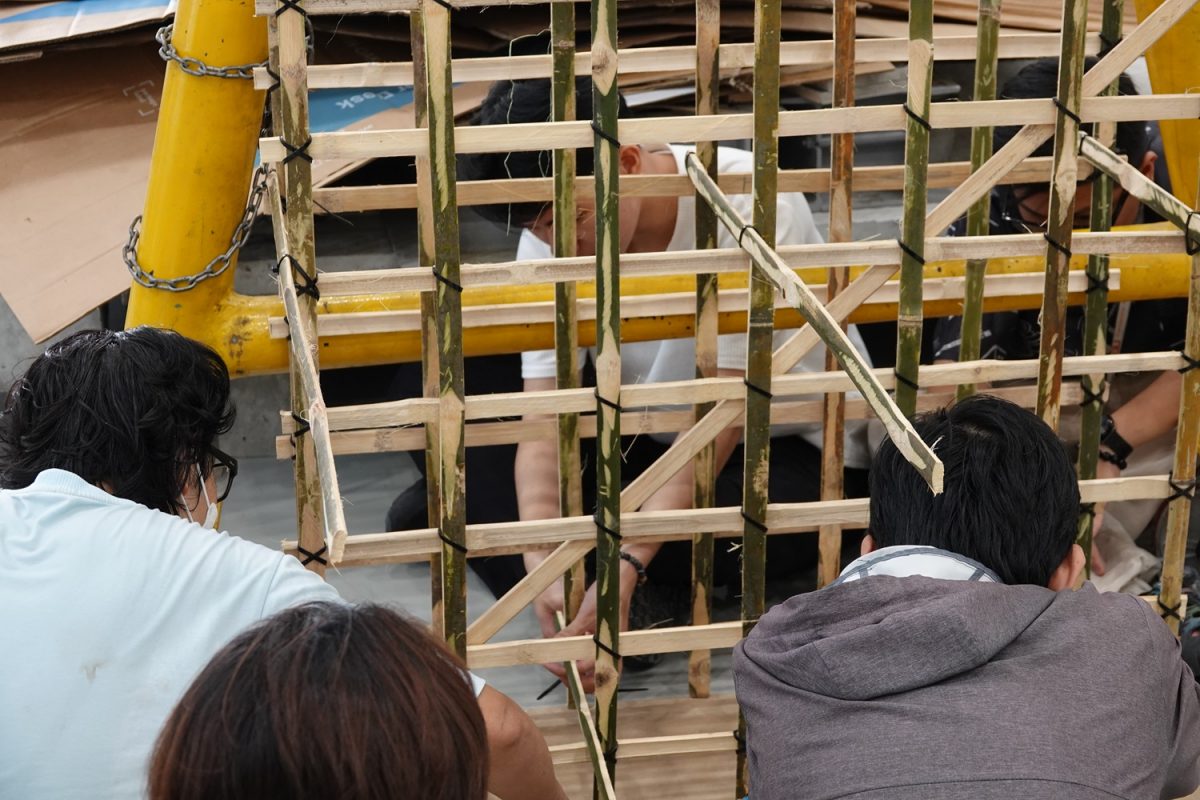
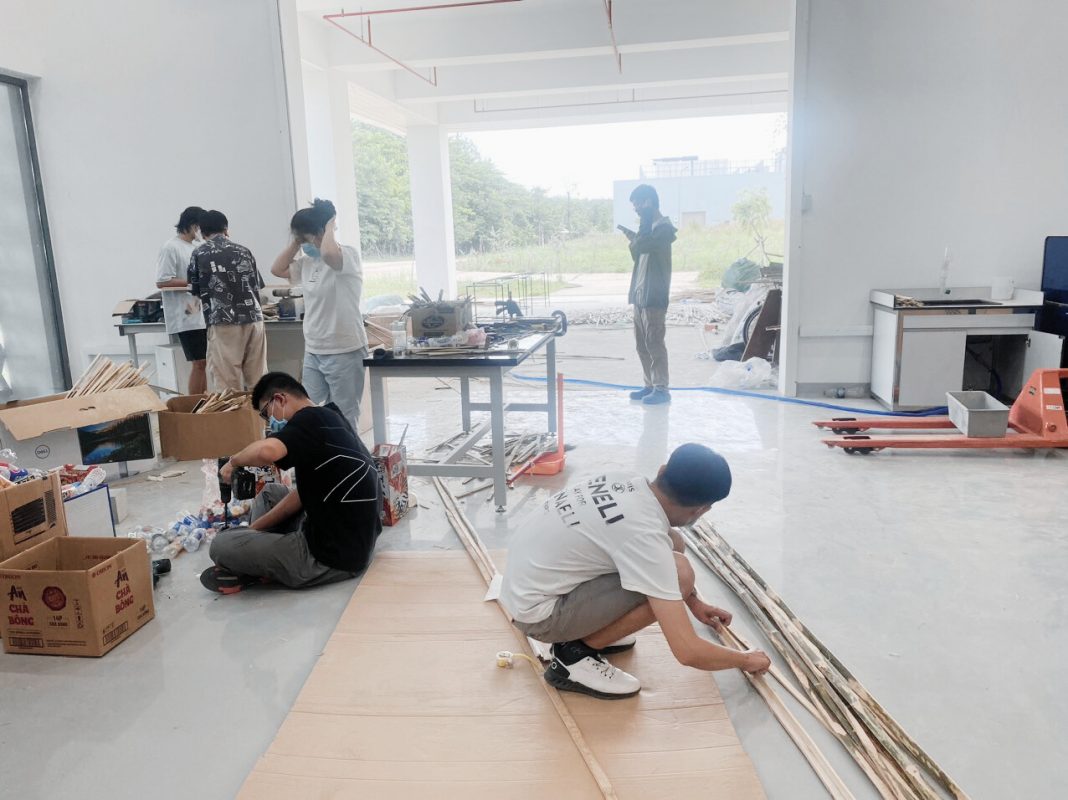
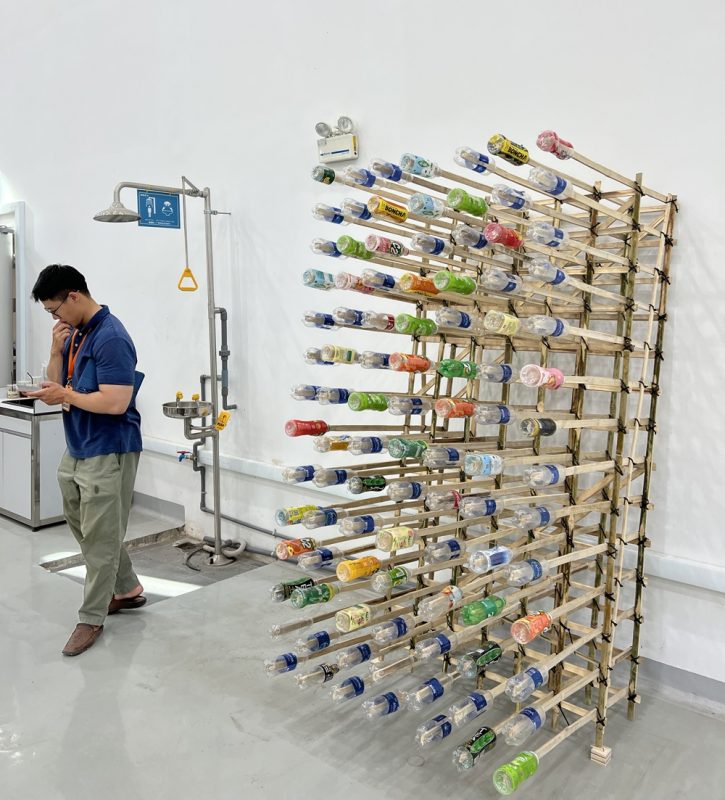
Topic II – Recycling Cardboard
C1 – Cardboard Sphere I
Concept: Sphere installation made of recycled cardboard as an art, architectural object. The hemisphere can be a test object for a living module made of recycled material.
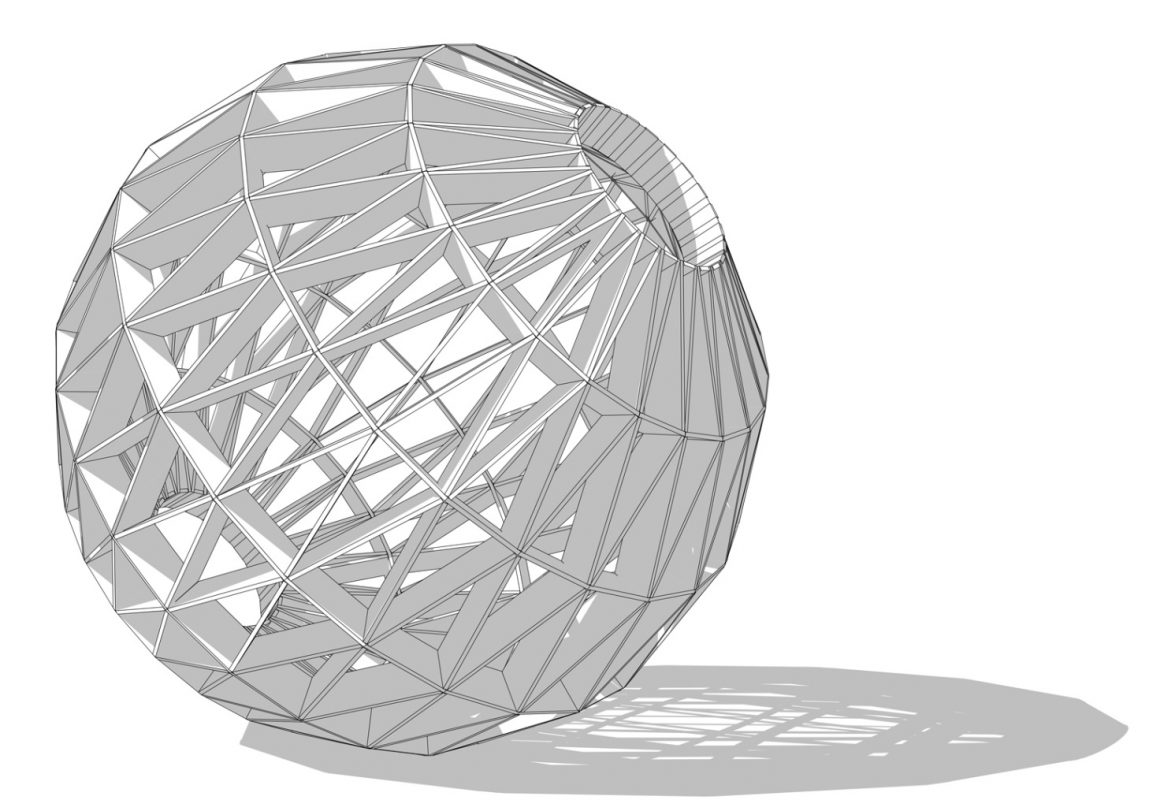
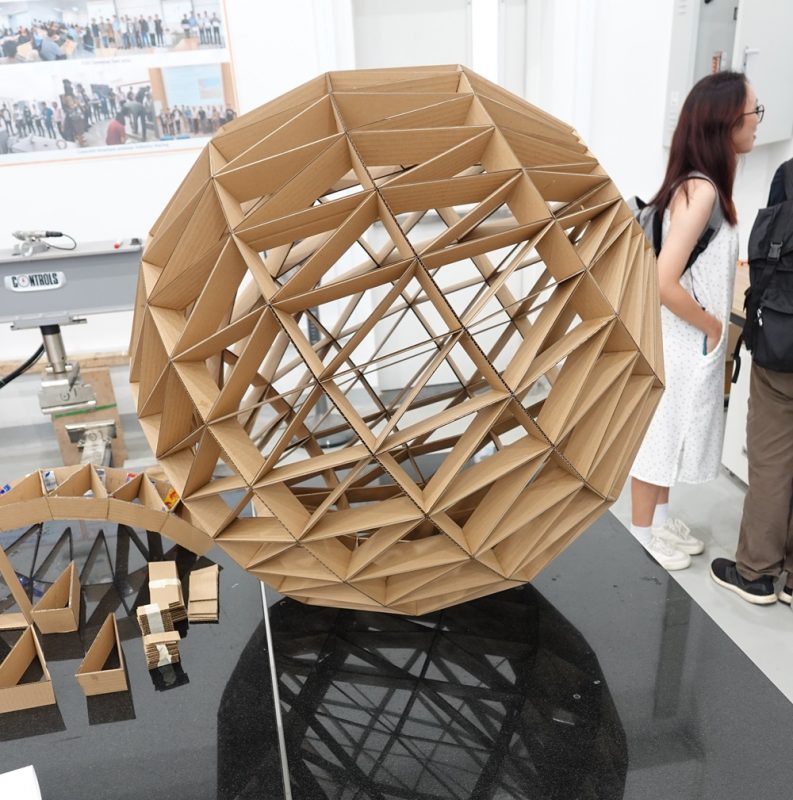
Task: making plans for the object, making the material, the sphere, Developing nodes, either directly glued, or sheet metal joints/node sheets e.g. screwed or glued ( sustainable separable).
Material: Recycled corrugated cardboard because of weight and stability, alternatively solid cardboard. The cardboard should be glued in several layers to form a plate or strip. Imprints on the cardboard can be part of the design.
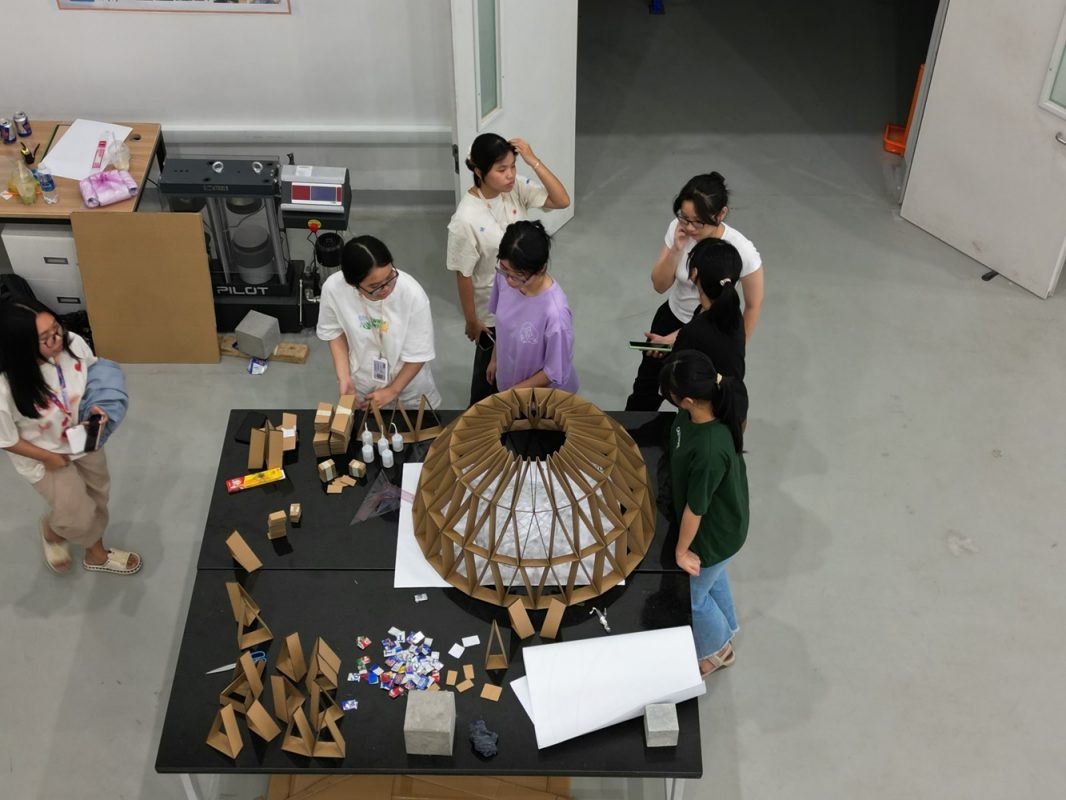
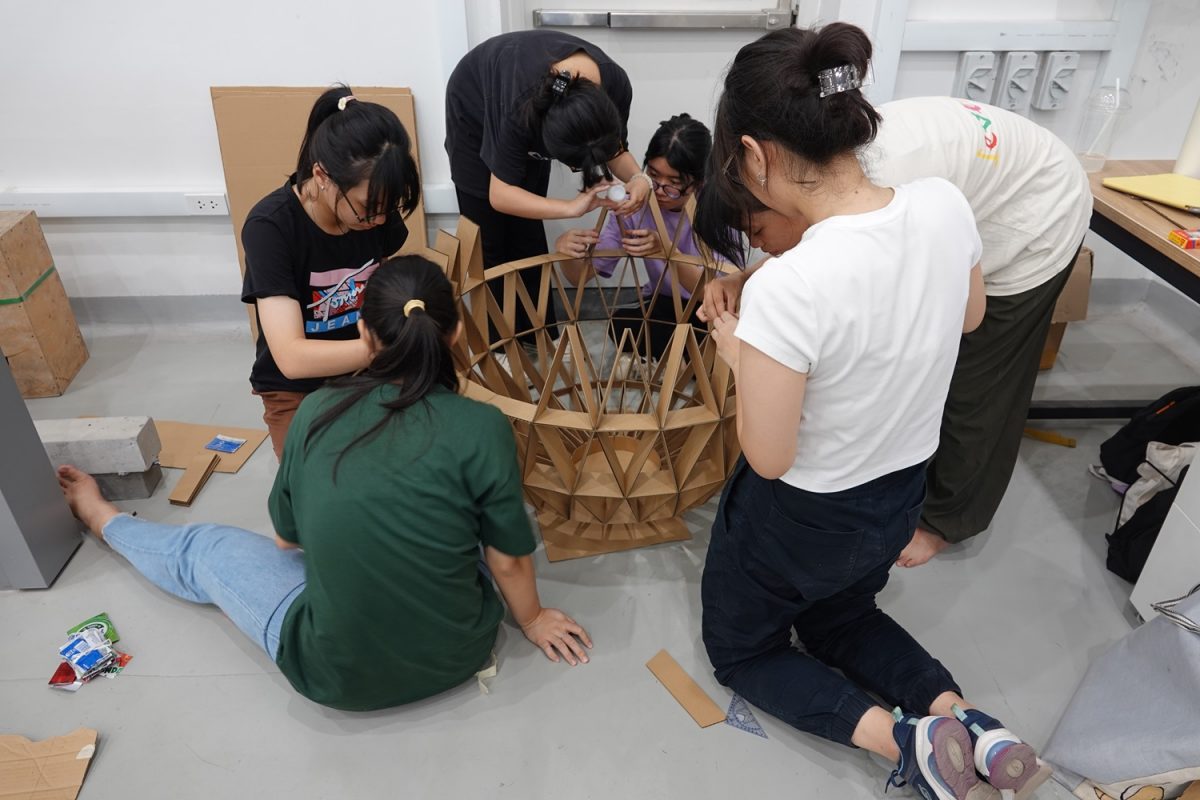
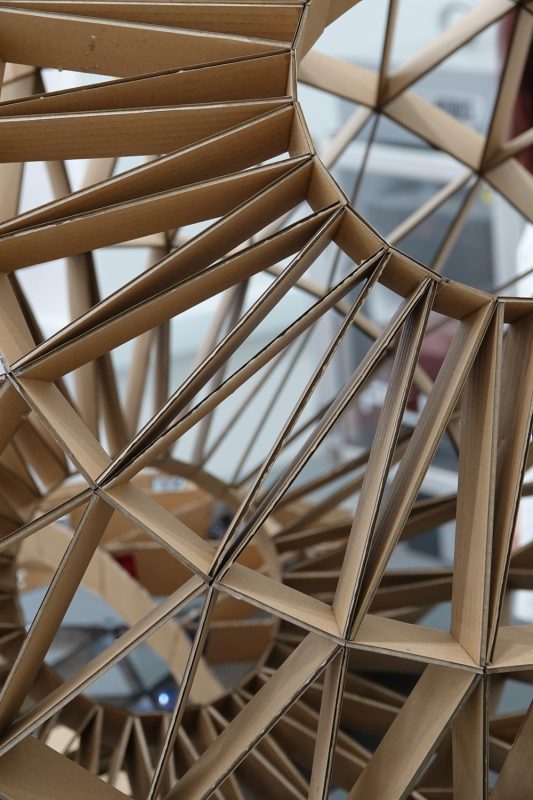

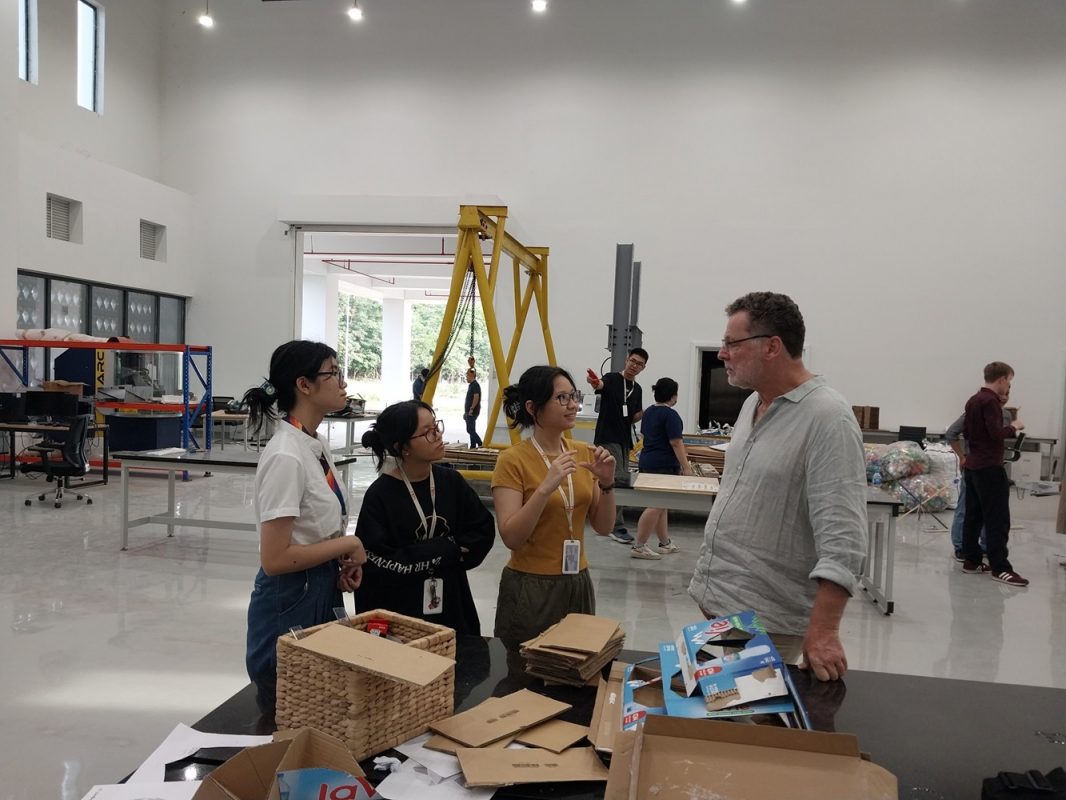
C2 – Card board Sphere II
Concept: Sphere installation made from used cardboard as a recycled art, disin/light object. Sphere assembled from several surfaces (developed from architect Buckminster Fuller‘s Tensegrity System – Dome/Domes).
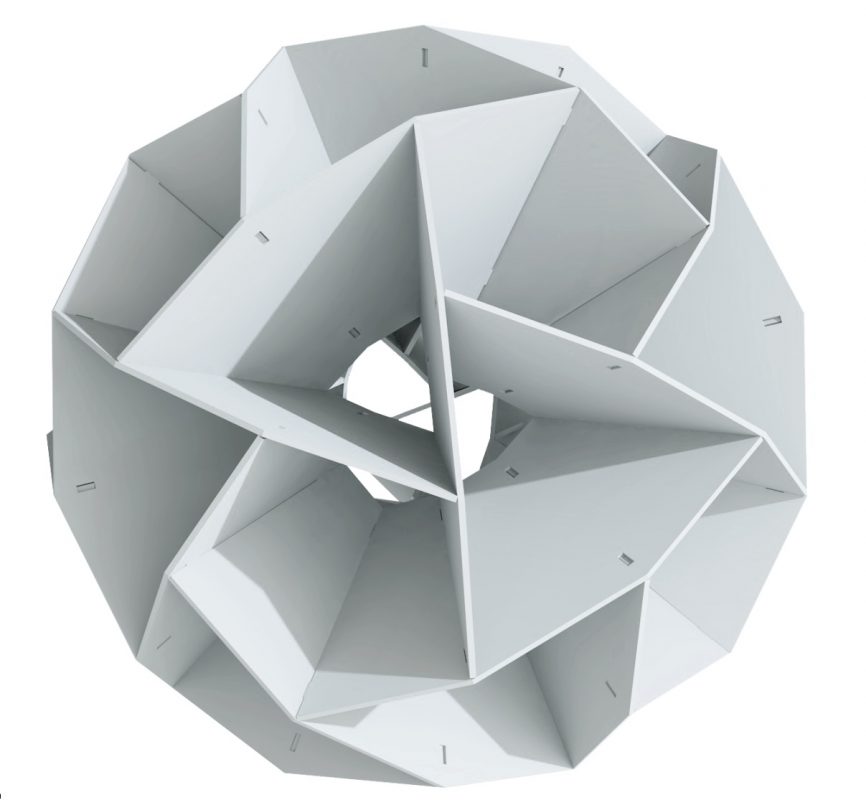

Task: Making plans for perfect shape of plugged modules (surfaces/plates). Production of one or more sphere shapes.
Material: Recycled corrugated cardboard or solid cardboard. The cardboard should be glued in several layers to form a plate or strip. Imprints on the cardboard can be part of the design.
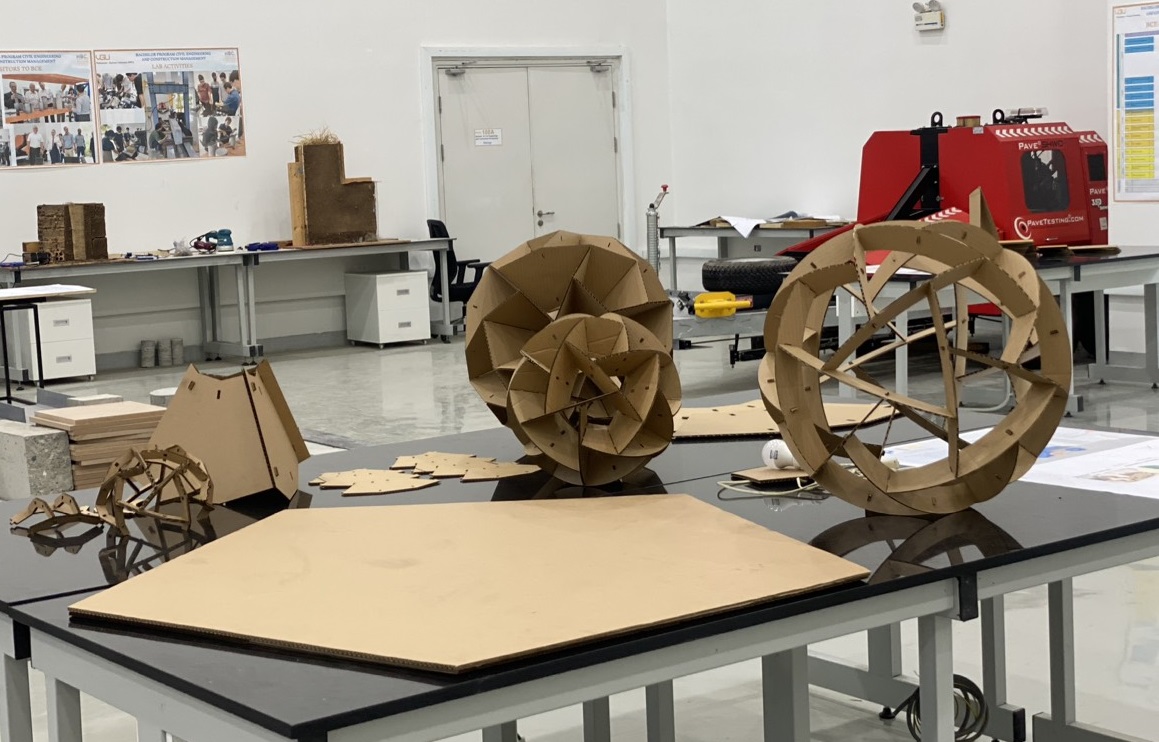
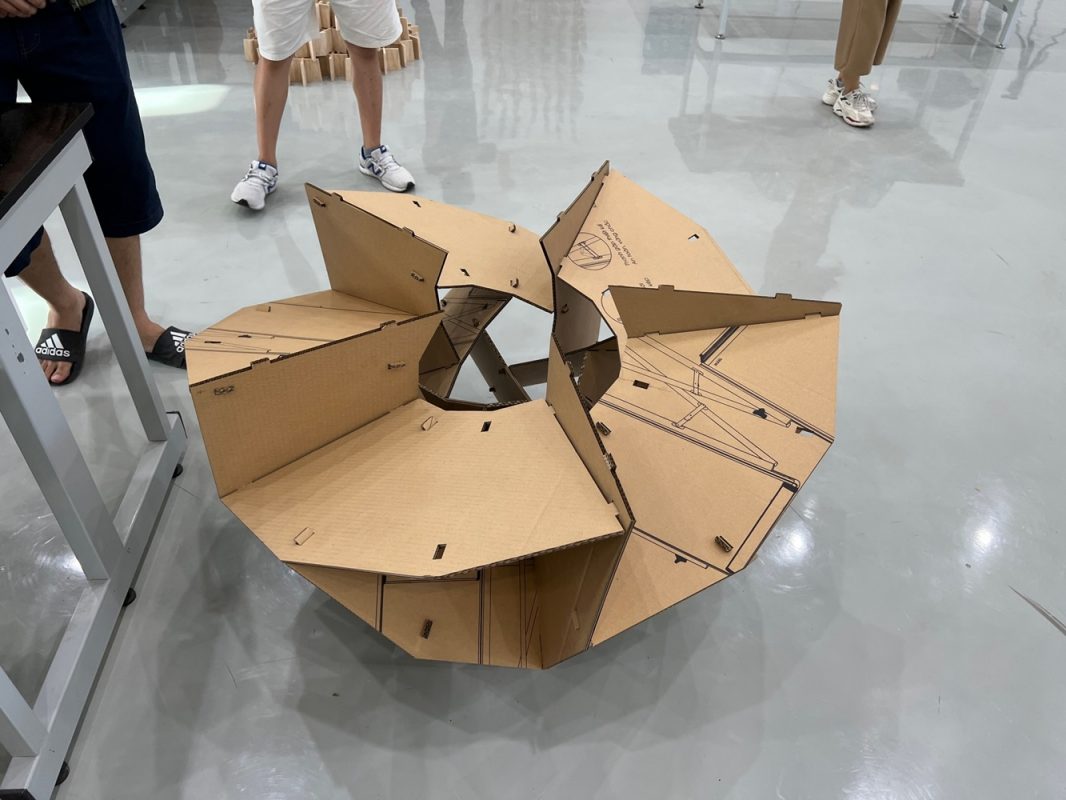

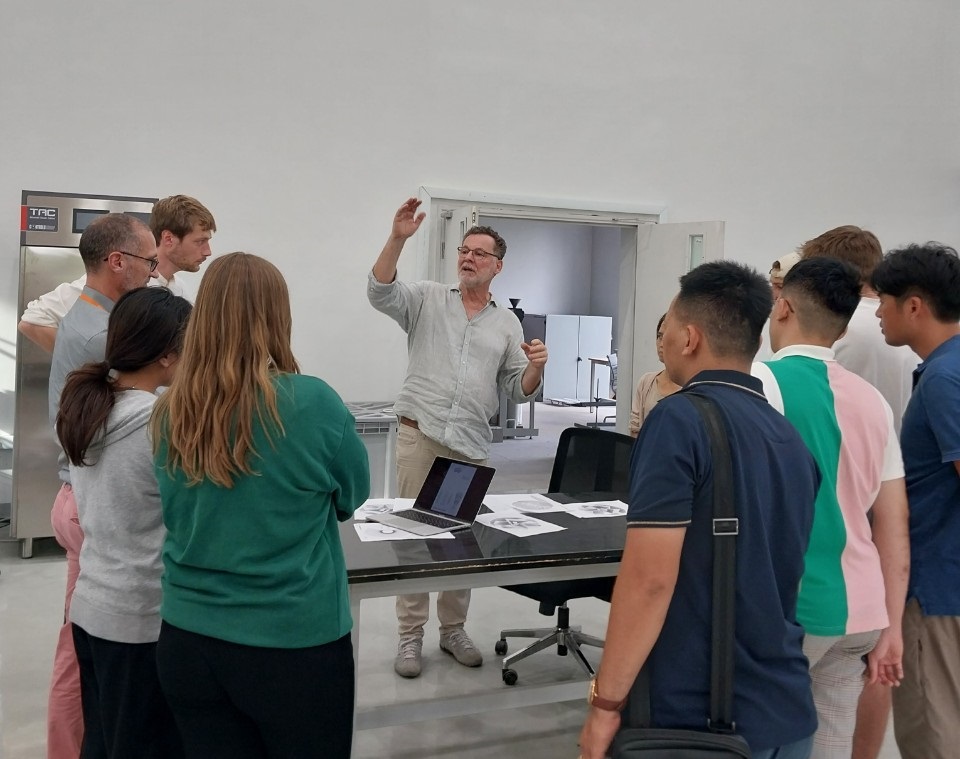
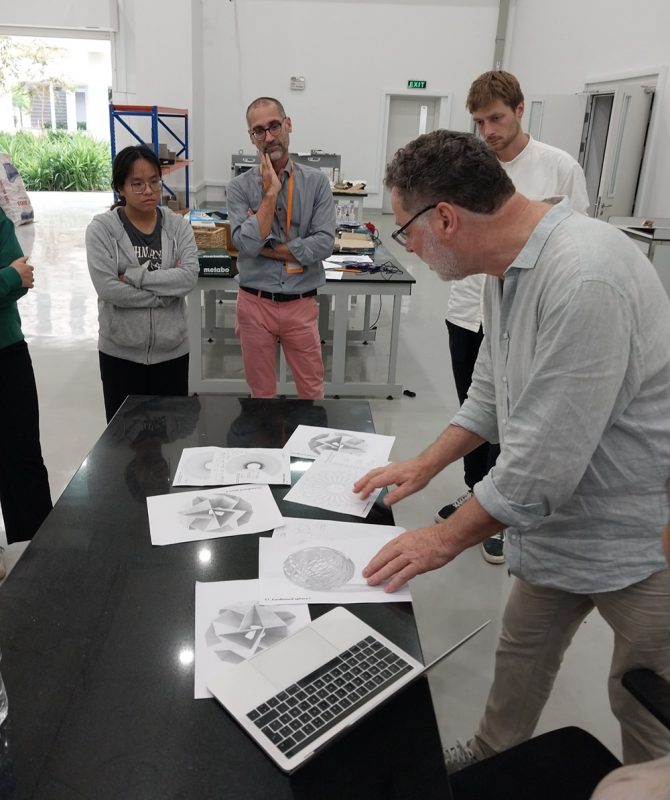
Topic III : Portrait of Saigon River
6 x 0,6 m table size with photograph (satellite image) of the Saigon River from the source to the mouth. Above and below the picture are different researches about the river. These include the cities/towns, industrial sites, gray water discharges, surveys on plastic and microplastics in the river, shipping traffic, water extraction and other relevant data that determine the image of the river and its flow.

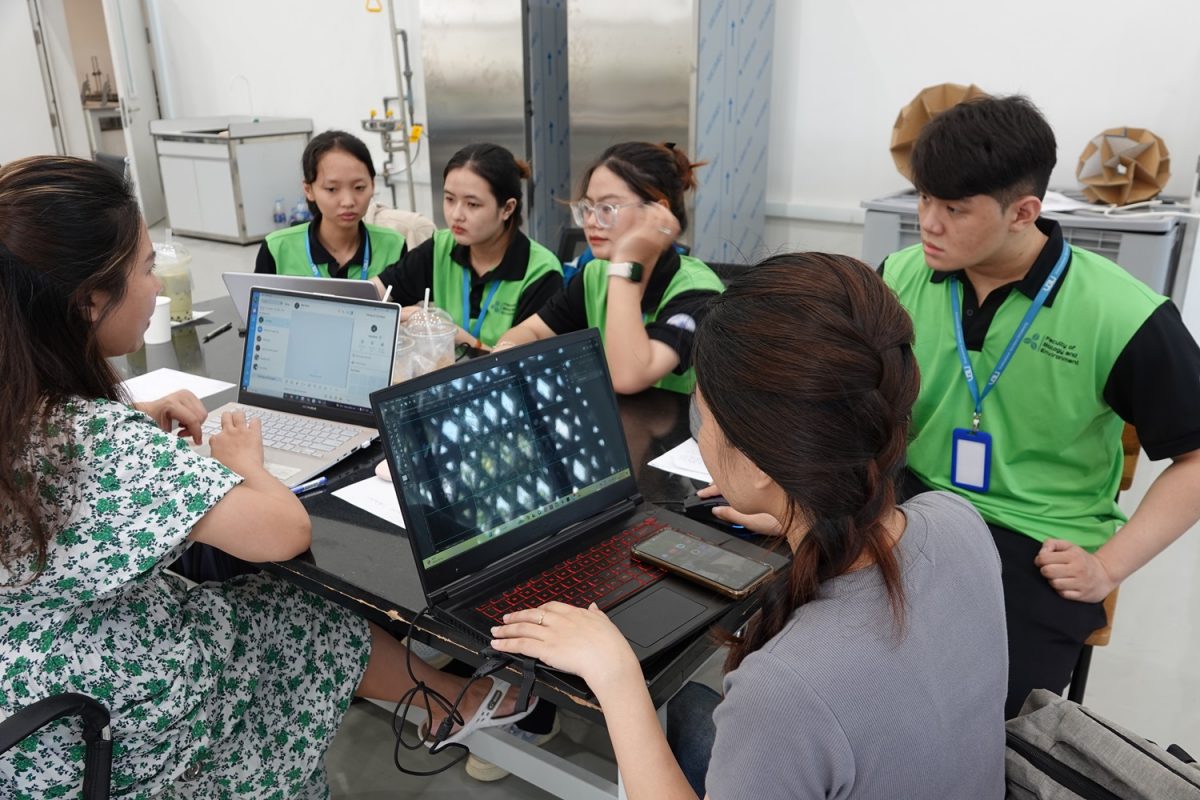
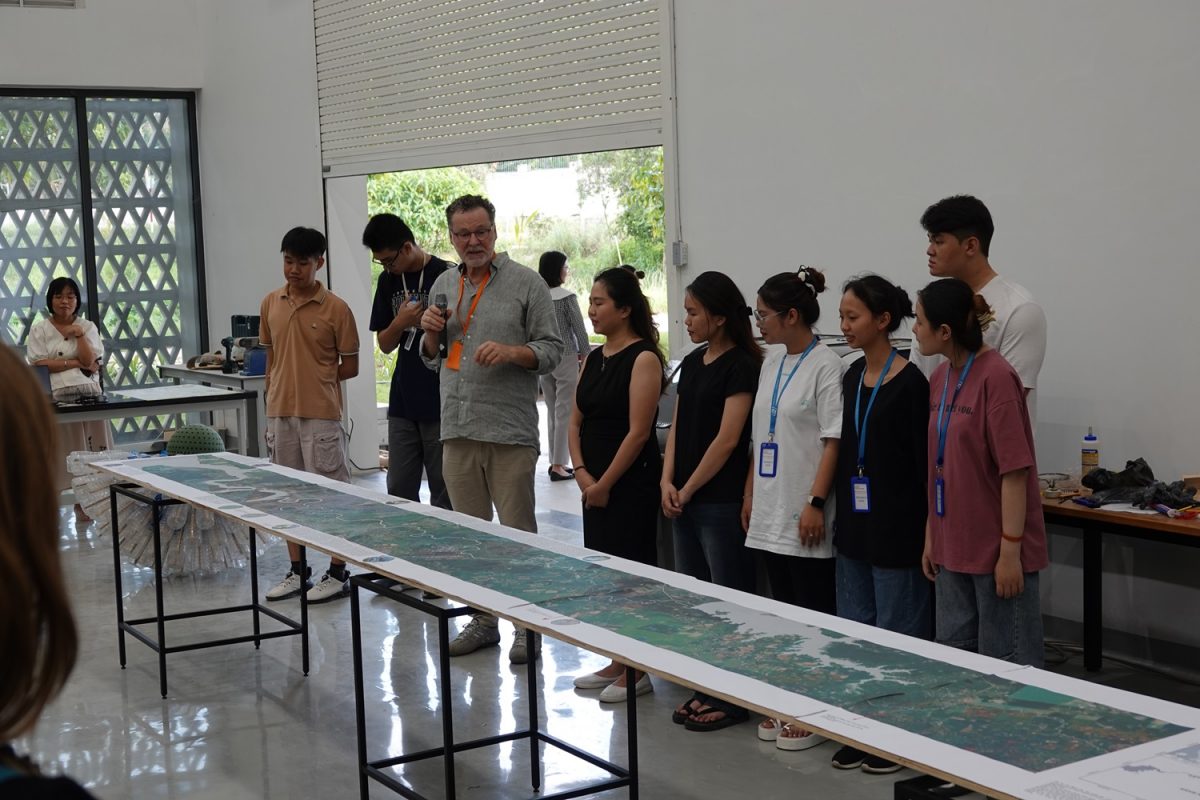
4. The plan for workshop Part 2 – January 2024
- Select some models from Workshop Part 1 to expand the project with a larger and more practical scale.
- Conduct an in-depth study of the Saigon River and extend the research to the Mekong River, focusing on gray water discharges, surveys on plastic and microplastics in the river, shipping traffic, water extraction, and other pertinent data.
- Possibly install exhibition for art work from Part 1 and Part 2 on the VGU Library ground floor.


